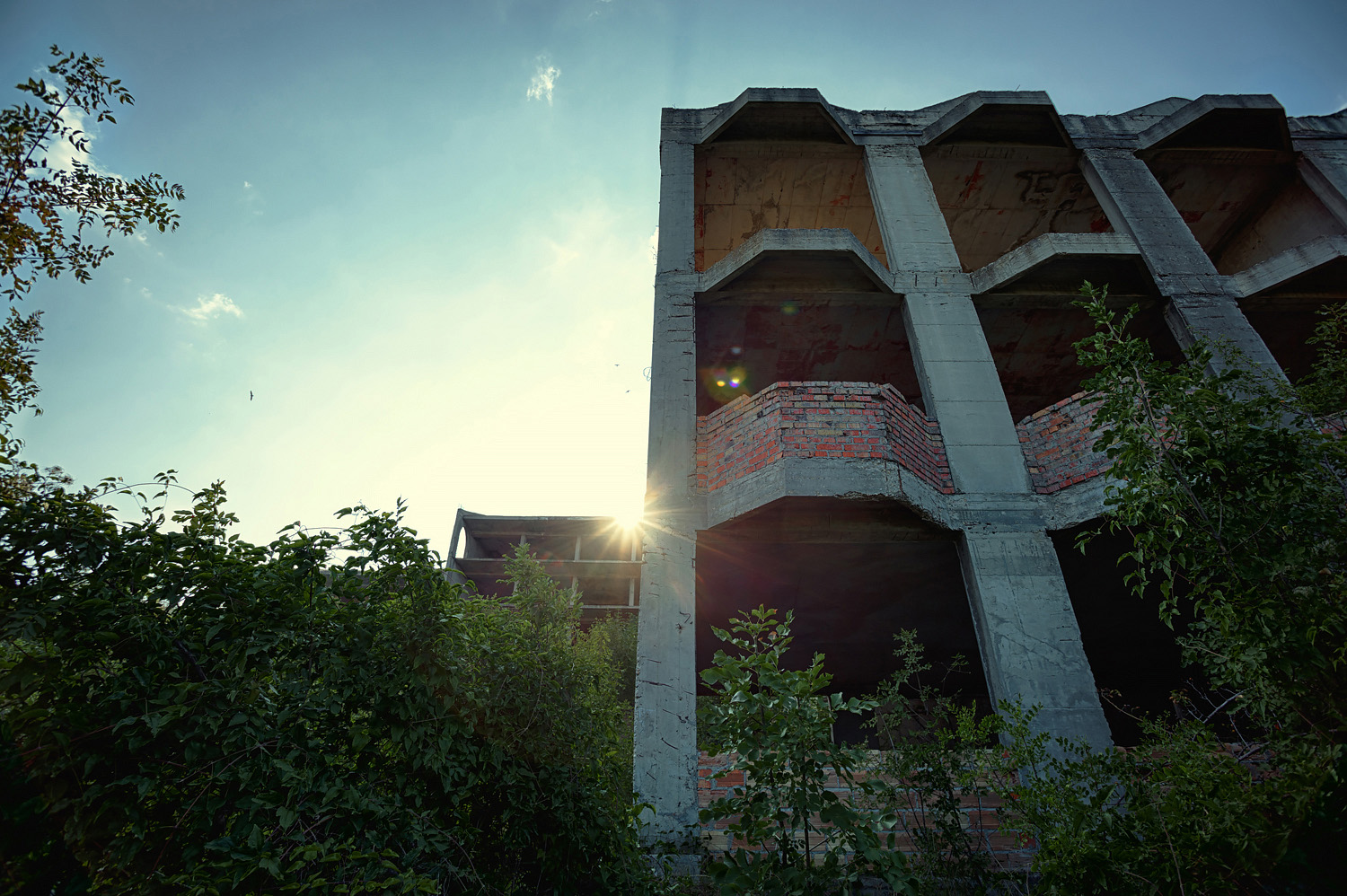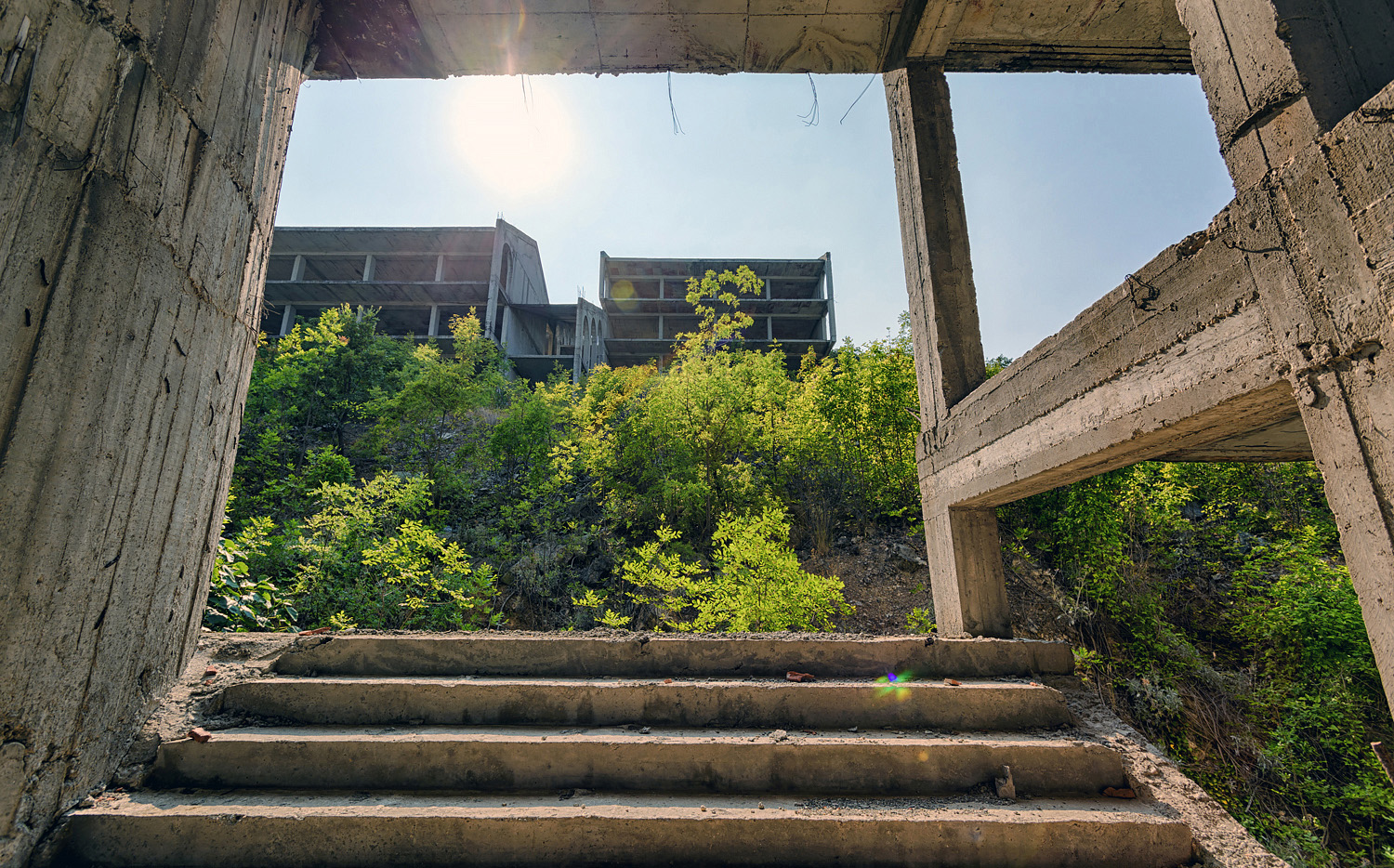 The drive along the coast down Route 99 was as uneventful as always. It was the end of July, and hordes of tourists, foreign and domestic, were still swarming the lanes of the divided highway, drawn to the allure of the Black Sea. I had driven down this same road many times before, passing through the familiar center of Burgas, then heading down, parallel to the water, on the way to one of the many destinations on Bulgaria’s southern shores.
The drive along the coast down Route 99 was as uneventful as always. It was the end of July, and hordes of tourists, foreign and domestic, were still swarming the lanes of the divided highway, drawn to the allure of the Black Sea. I had driven down this same road many times before, passing through the familiar center of Burgas, then heading down, parallel to the water, on the way to one of the many destinations on Bulgaria’s southern shores.
This time, the endpoint was the Ropotamo Nature Reserve - a protected area of rich natural habitats and biodiversity, sprawling around the winding bed of the river known by the same name. I was headed there in an attempt to relieve the monotony of a lazy and much-too-hot Sunday afternoon.
I had picked my point of interest somewhat randomly after examining a road map, but in the back of my mind there lurked the subconscious draw of another objective that had been sitting unchecked on my to-do list for far too long. Unsure about ease of access or exact coordinates, I had unofficially dismissed this one as “too difficult”. But now, driving to Ropotamo in the middle of a scorching July afternoon, I was acutely aware of the fact that this particular object of interest lay somewhere quite nearby.
The Arkutino Home for Gifted Children began as the brainchild of Lyudmila Jivkova, daughter of the long-standing head of state of the People’s Republic of Bulgaria, Todor Jivkov, and a determined individual, who had previously used her father’s influence and the taxpayers’ levs to bring a number of cultural projects to fruition. An idea for a vacation and education complex designed to accommodate gifted children of all nations, came about in the late 1970s, partly as a result and continuation of Lyudmila’s previous cultural endeavors, namely the “Flag Of Peace” children’s festival, hosted in Bulgaria in 1979. This ambitious architectural project was to be situated in a scenic location and punctuated by unique architecture. To those who made the final decision, the Arkutino sand dunes, located roughly halfway between the vacation towns of Sozopol and Primorsko, marked the perfect spot.
In the early 1980s, soon after Lyudmila’s sudden death, a foundation named after her and created by the state, decided that the time had come to finally bring the Arkutino project to life. The land above Arkutino beach was appropriated and construction began in 1985, sparing no cost for materials or manpower, in order to bring the fallen first daughter’s grand dream to life.
For reasons that are still not completely clear, construction ground to a halt in 1989, amidst political changes in Bulgaria and the death throes of the socialist regime. According to one theory, “Ekoglasnost” – an ecological preservation organization that was somewhat influential during the period, had a hand in freezing the project’s progress, deeming the huge concrete structures as obstacles on the flight and migration paths of birds.
Ever since, the land and the half-finished buildings on it have been frozen in time, suspended in a perpetual limbo - a reminder of a dream world that was never to become reality. Ownership has been passed back and forth between the Ministry of Culture, the Ministry of Education, private construction firms and even foreign investors, bent on morphing the existing infrastructure into a modern vacation village.
But the skeletons still remain. Weathered by time and the elements, and beginning to be reclaimed by the nature that grows all around it, the deserted dream of a dictator’s darling still watches over the bay of Sozopol, more than thirty years after its inception.
…
I had arrived. Parking at the improvised Ropotamo Nature Reserve dirt lot next to the main road, I walked over to the information sign to find out more about the reserve, and then headed back to the car to pick up my camera gear. As I was walking back, facing east toward the sea, the very smallest bit of evidence – barely the edge of a tall concrete structure - revealed itself in the midst of the foliage just across the road and to the left. It didn’t take many moments of deliberation for me to realize what had subconsciously prompted me in this direction all along. The Ropotamo trip was just a pretext. I walked across the roadway and headed off into the sand dunes.
...
After making my way through sand, vegetation and other obstacles, I was greeted by the first of many concrete giants, once I made it up the hill. 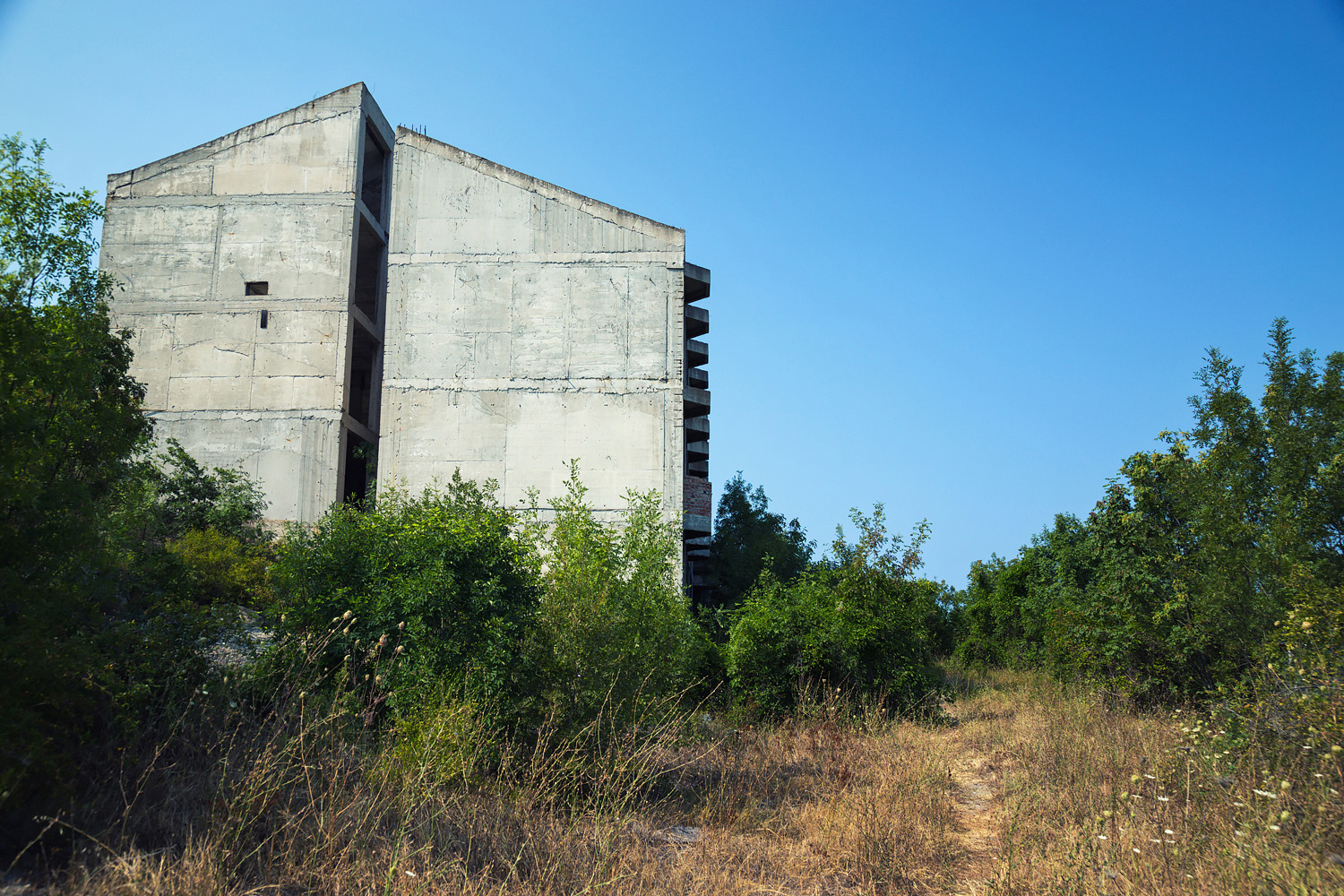
This is how the monolith looked from the front 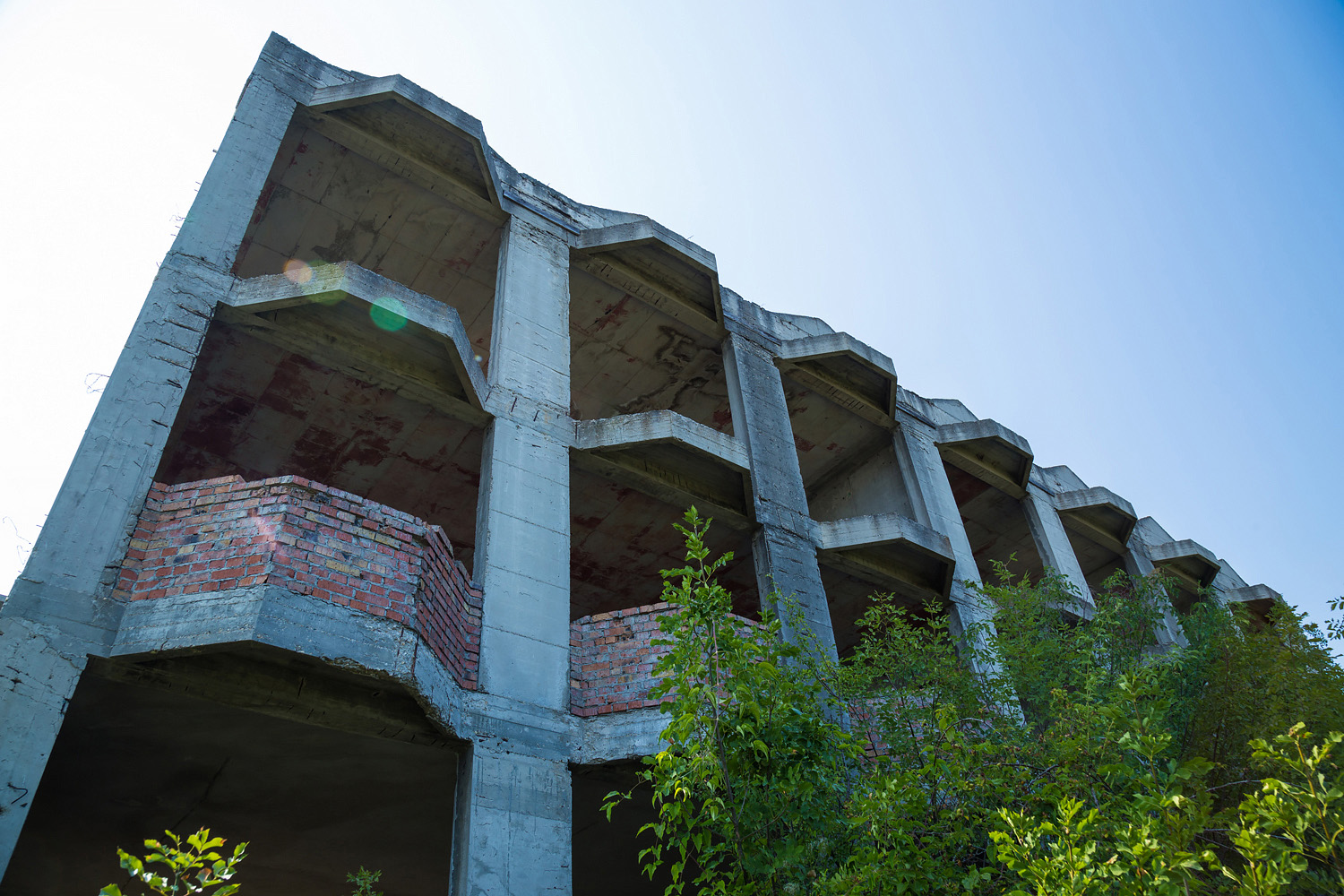 Access to the inside proved easy and I immediately came face-to-face with the ubiquitous graffiti and random artifacts- the only residents of the ghostly compound
Access to the inside proved easy and I immediately came face-to-face with the ubiquitous graffiti and random artifacts- the only residents of the ghostly compound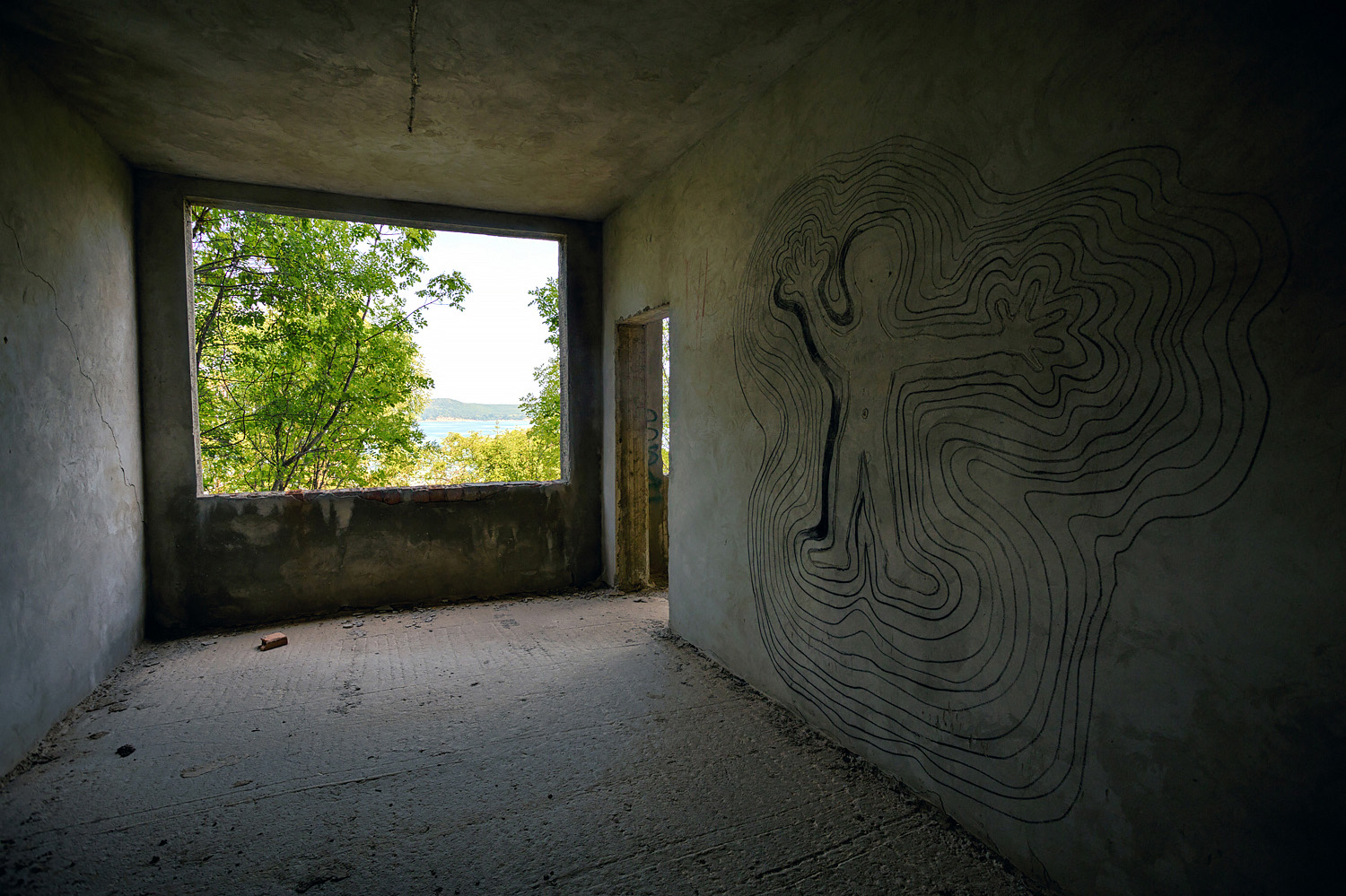 The famous "soft" socialist door...
The famous "soft" socialist door...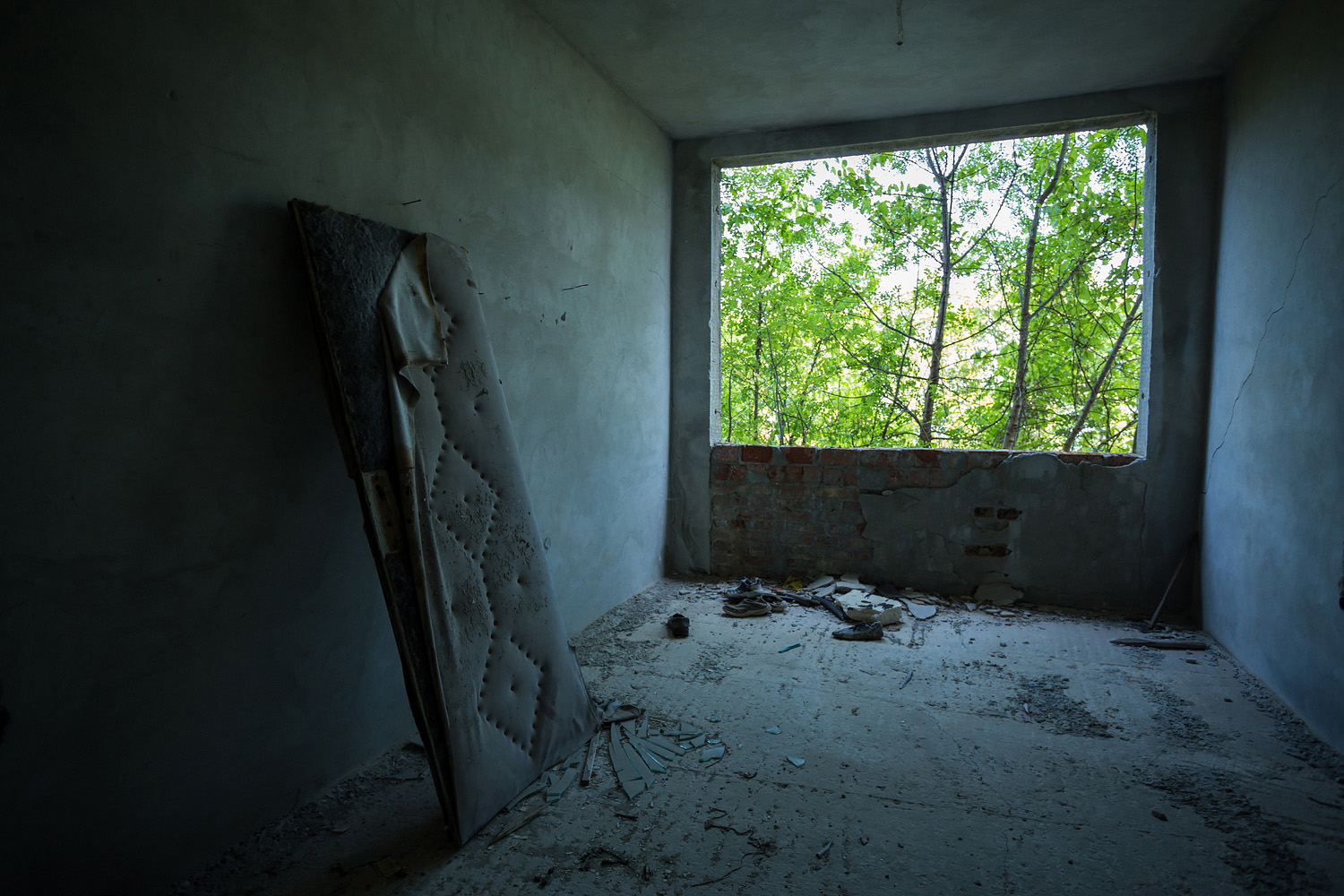 And small signs of at least some presence of life...
And small signs of at least some presence of life...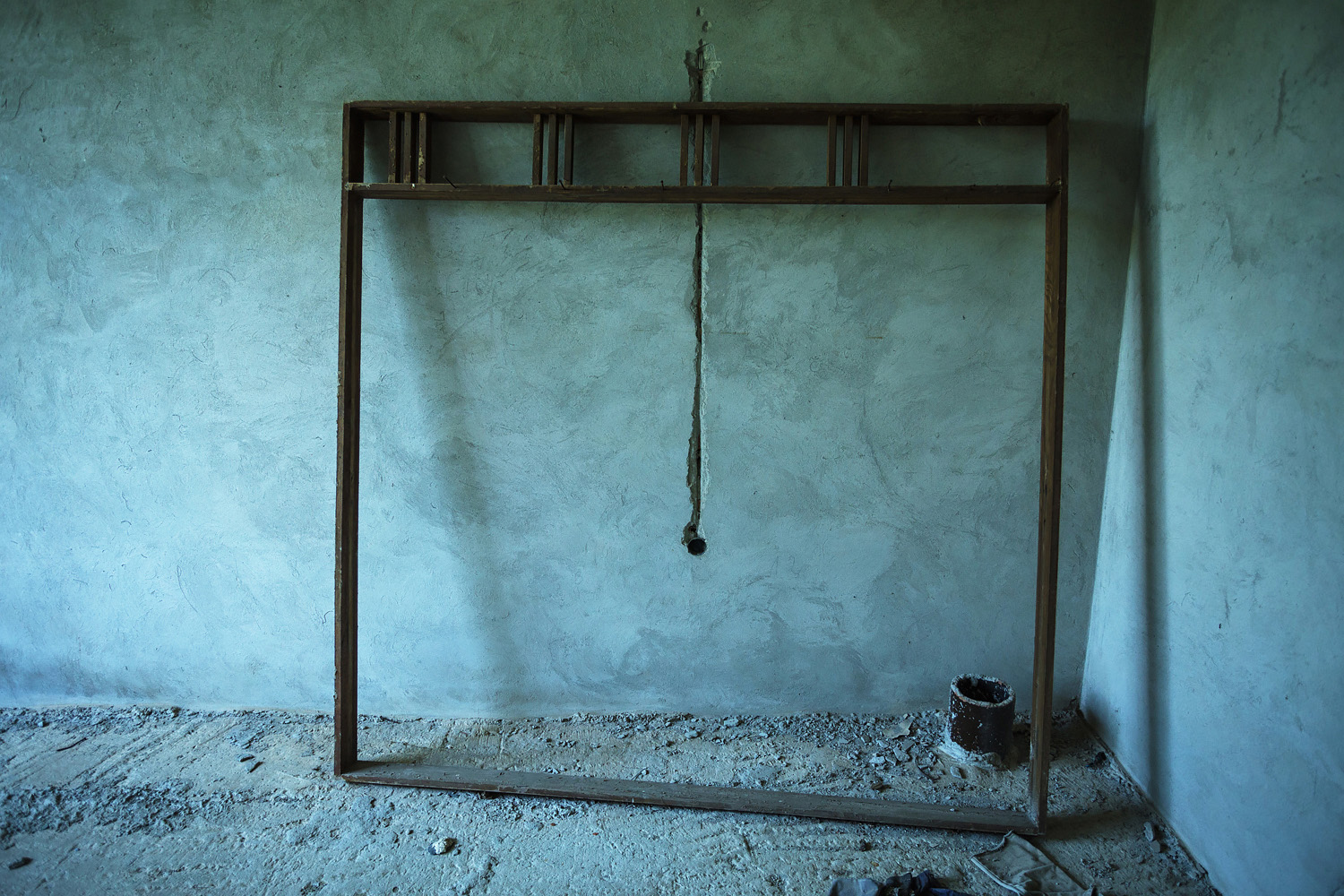 One of the large halls further down is overwhelmed by decay
One of the large halls further down is overwhelmed by decay 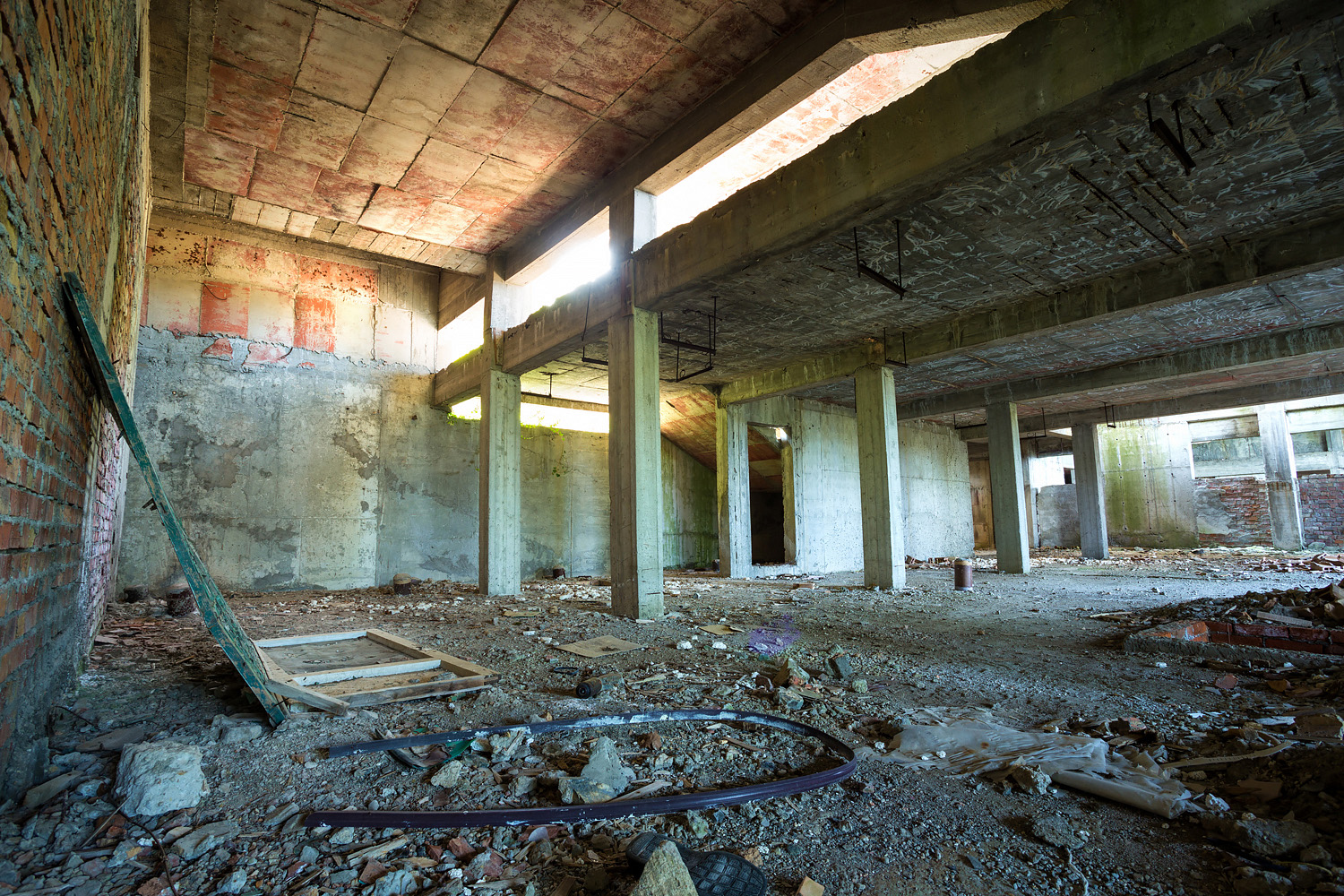 Despite its unfinished and broken-down state, the spiral staircase looks truly impressive
Despite its unfinished and broken-down state, the spiral staircase looks truly impressive 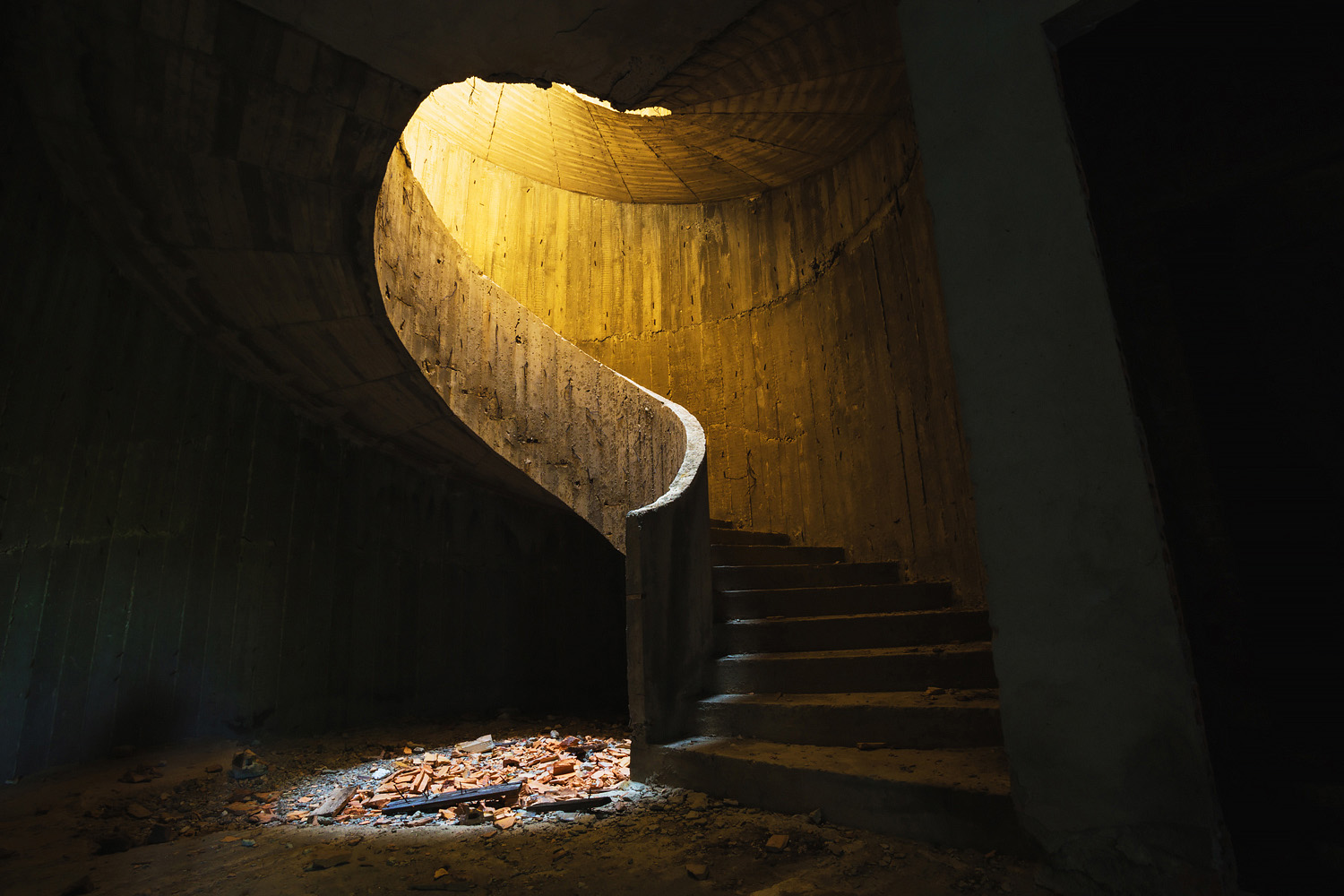 Looking up also presents an unique view
Looking up also presents an unique view 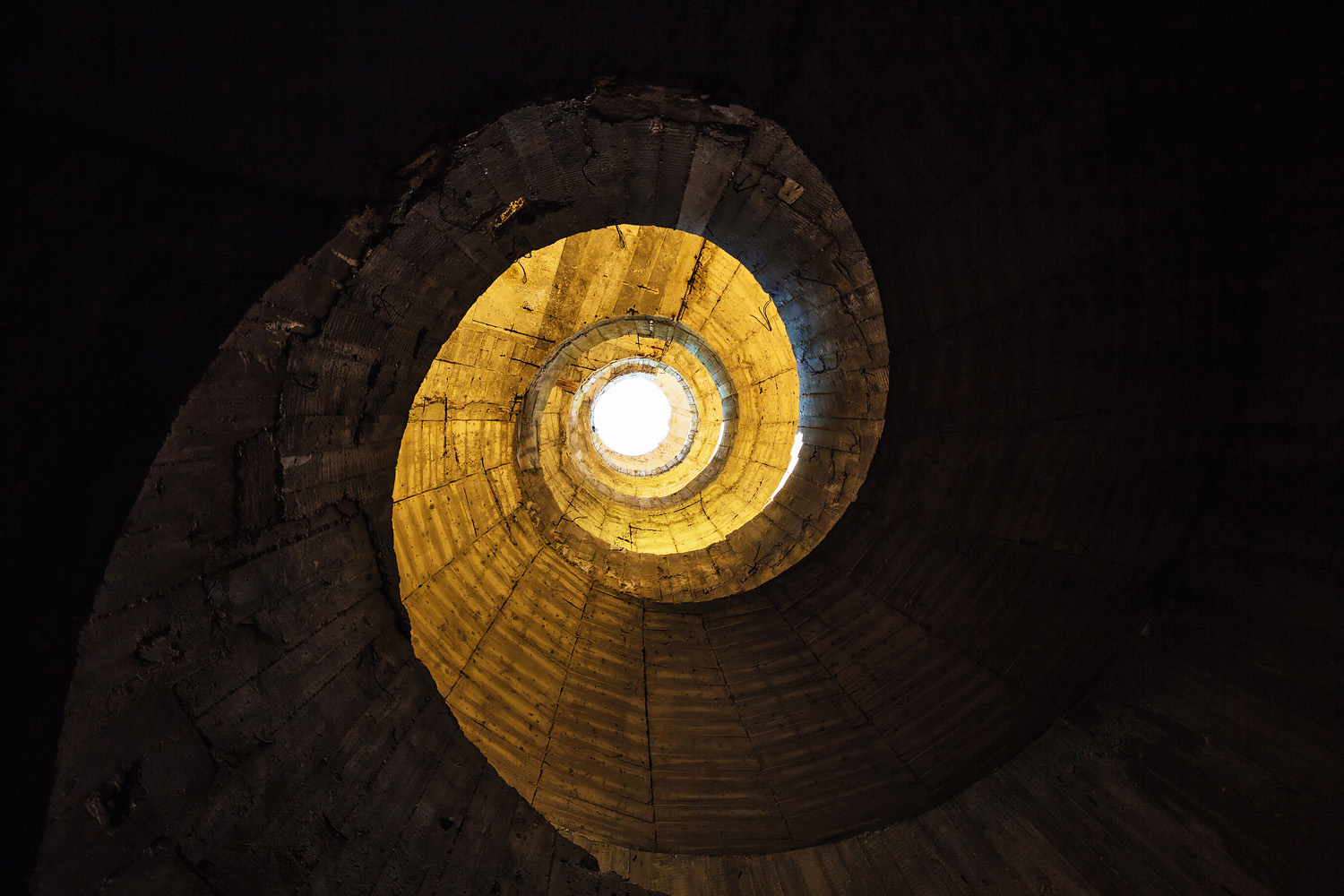 As does the view toward the Black Sea!
As does the view toward the Black Sea!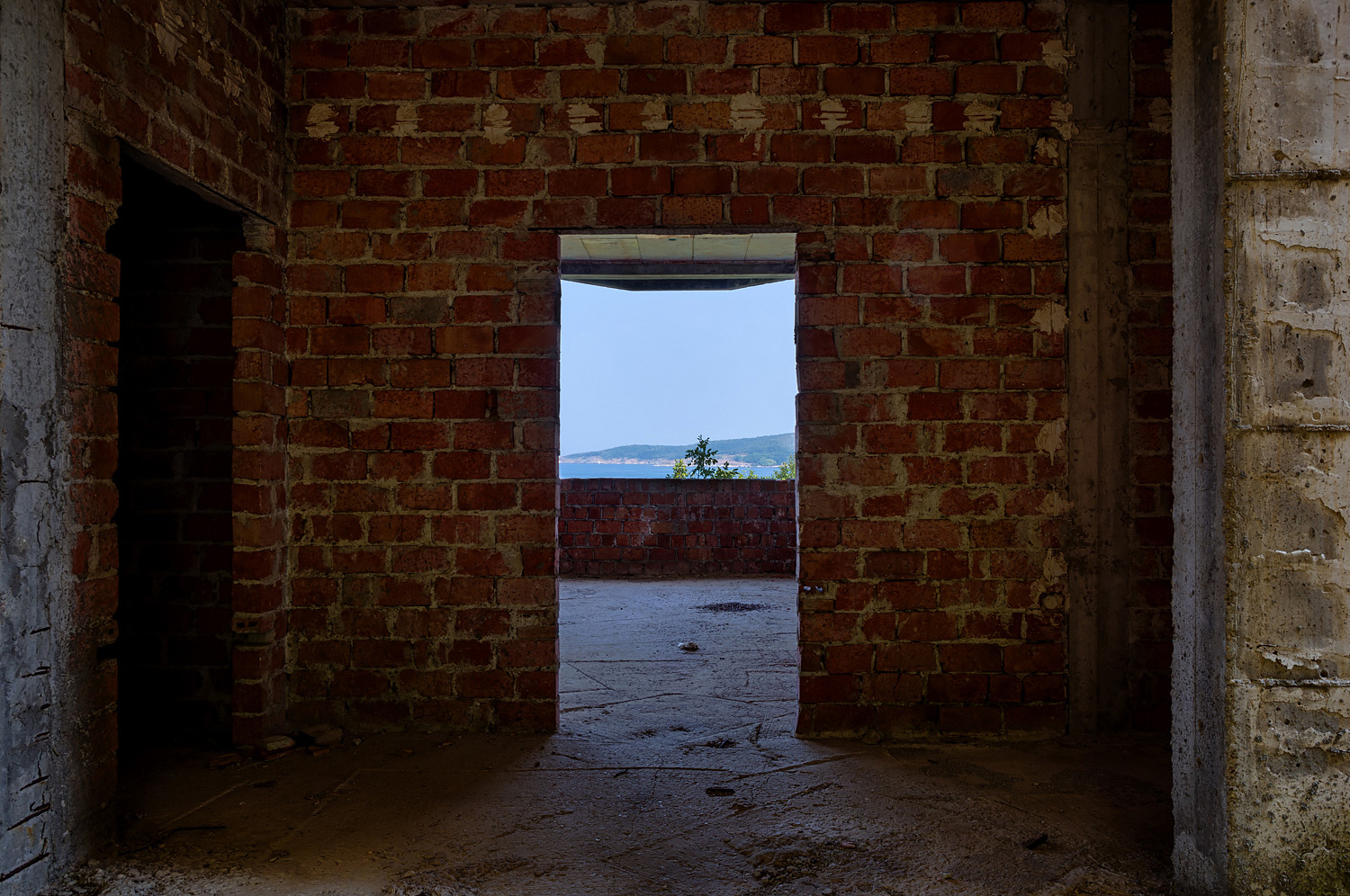 The spiral staircase led me up the floors
The spiral staircase led me up the floors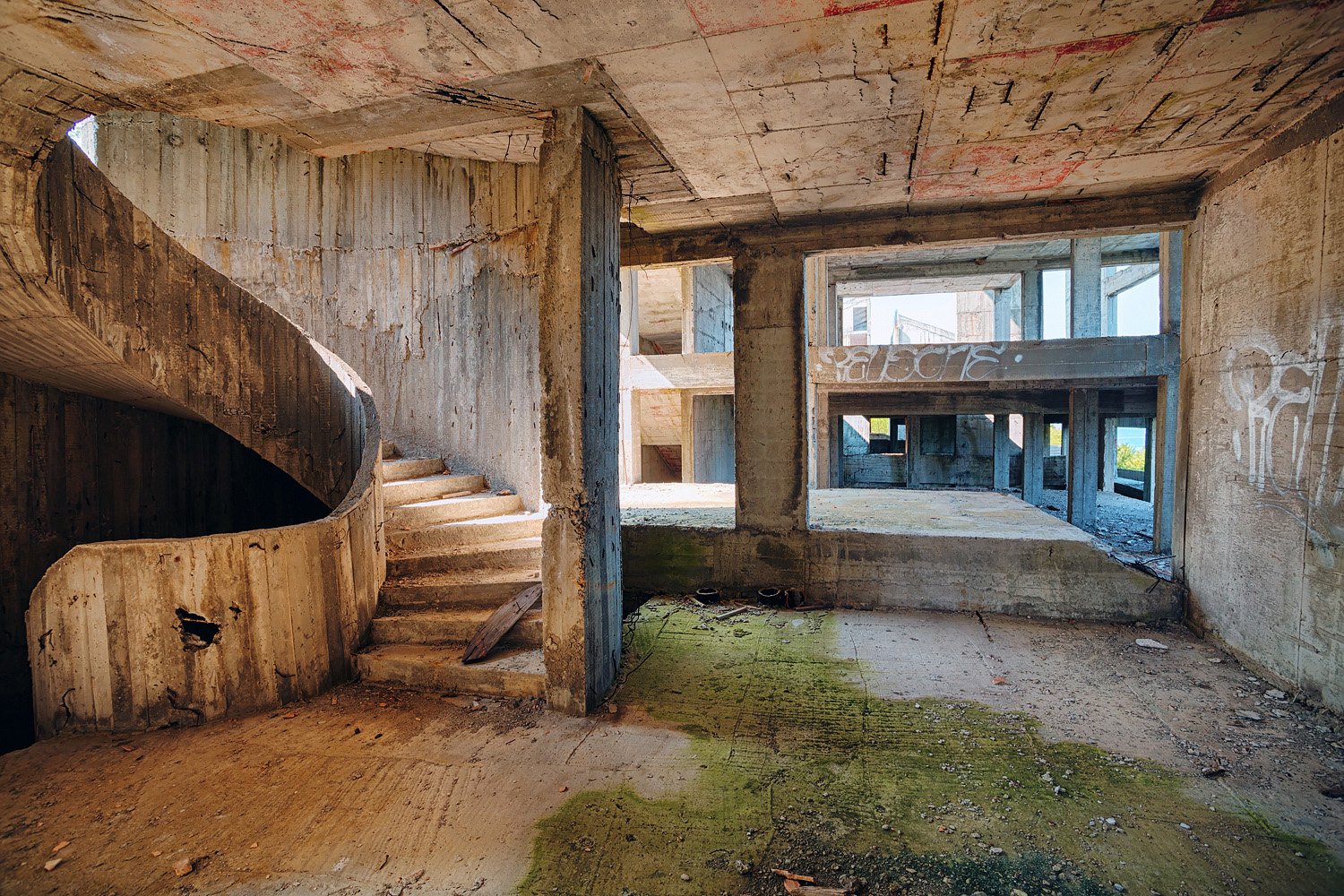 Sky above, death-drop below
Sky above, death-drop below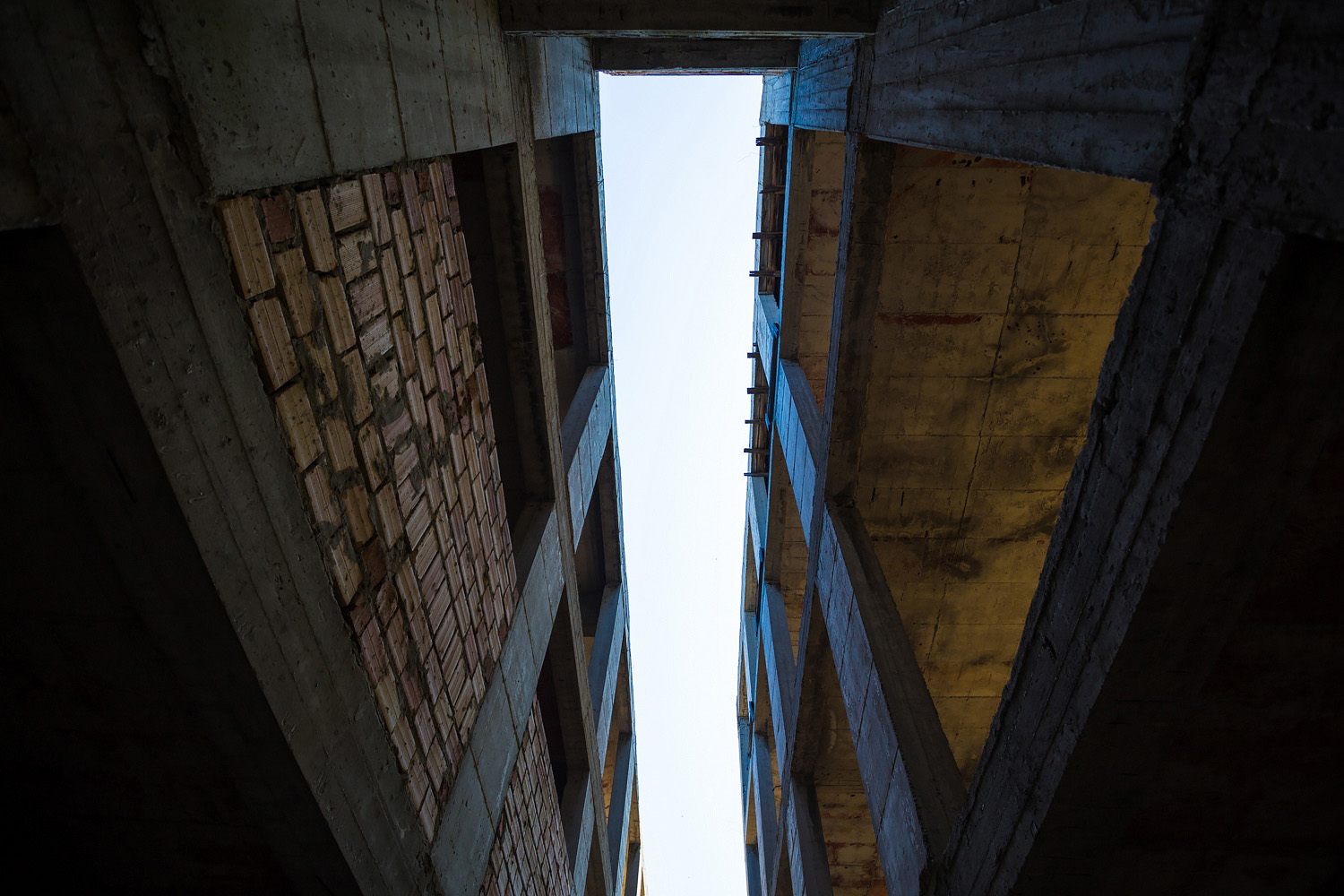 A view facing the beach, looking out the uniquely shaped windows
A view facing the beach, looking out the uniquely shaped windows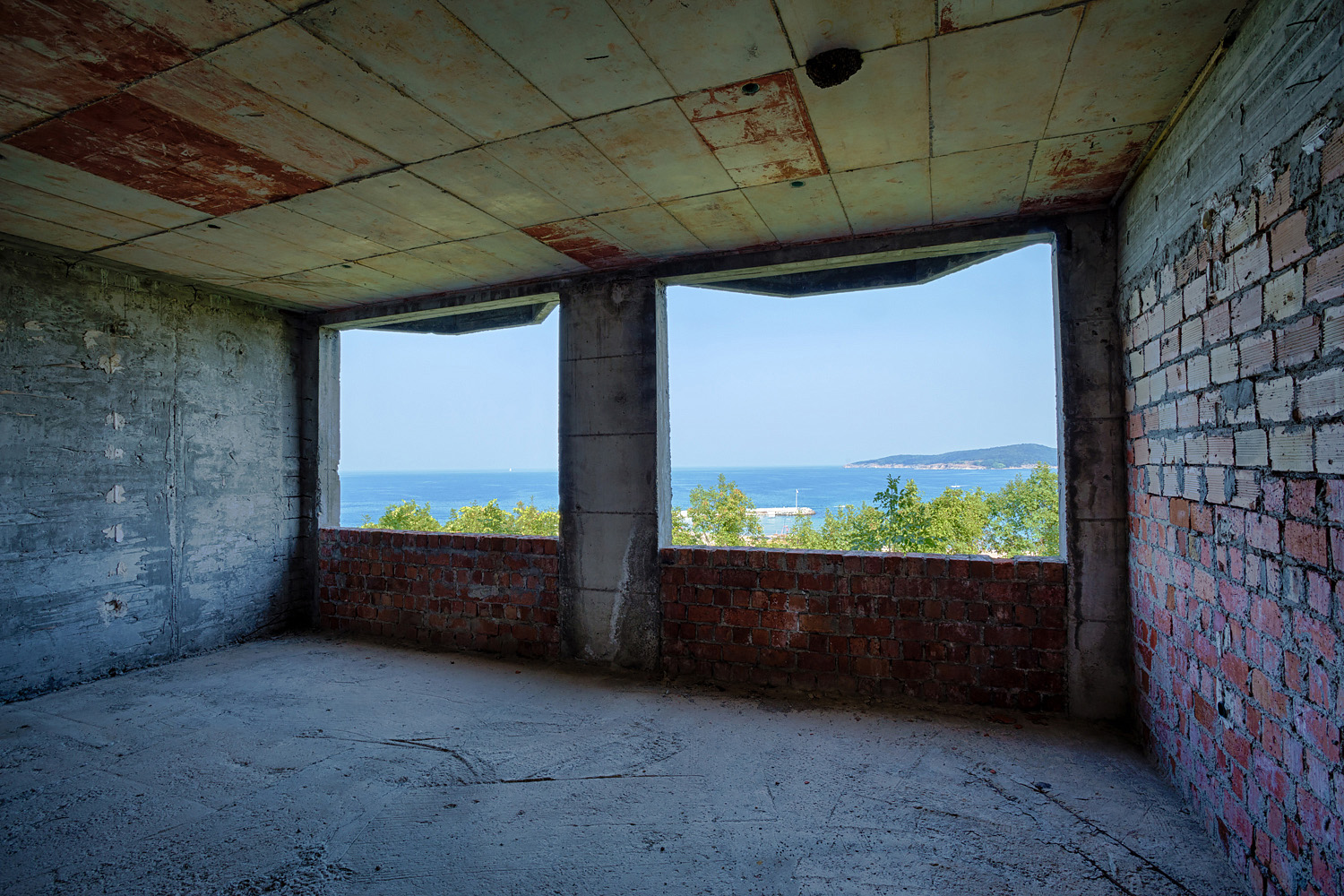 Another large hall, where the red (either by design, or courtesy of the march of time) roof fit in perfectly with the retro socialist atmosphere
Another large hall, where the red (either by design, or courtesy of the march of time) roof fit in perfectly with the retro socialist atmosphere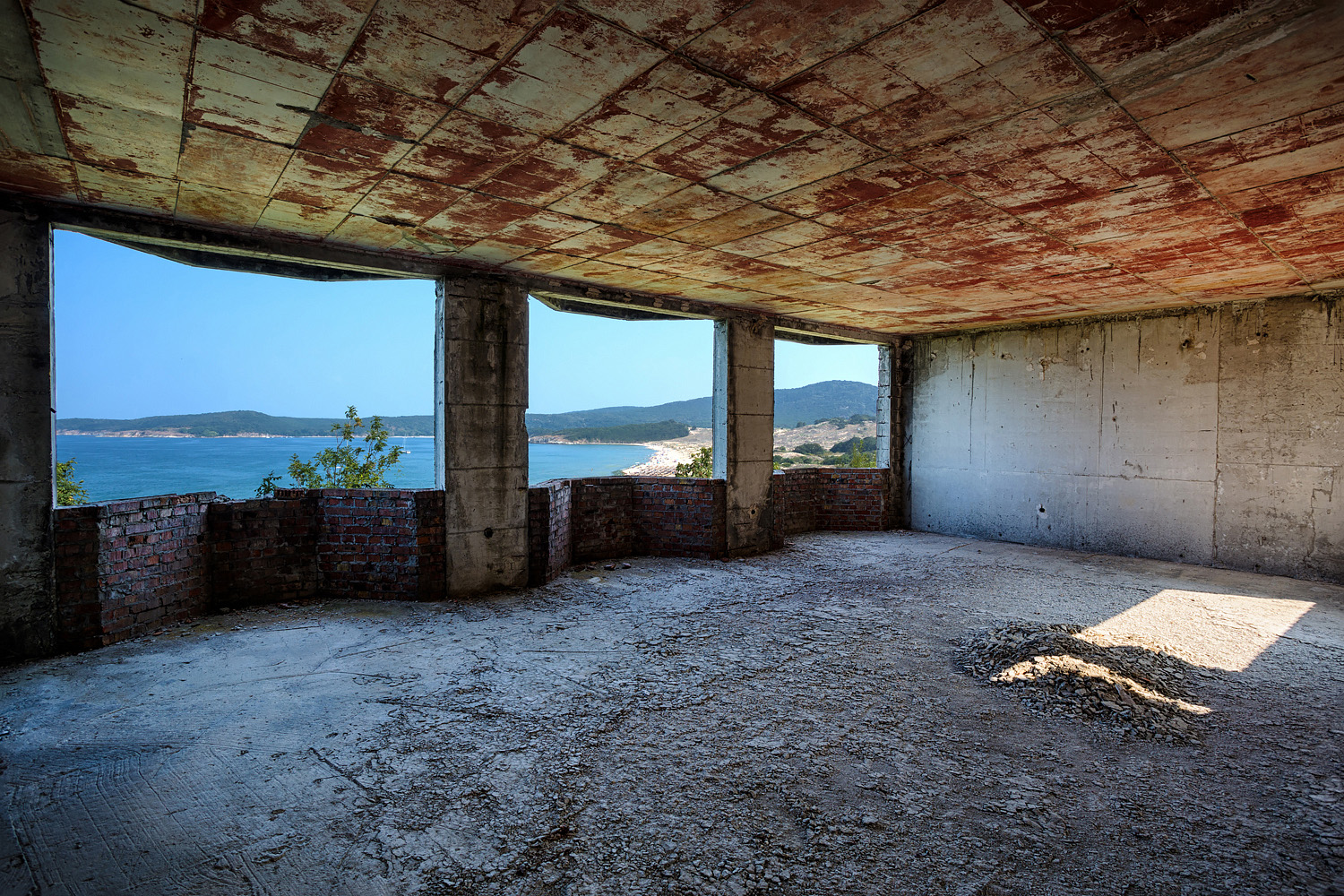 One of a few different dates I came across (all in 1989), that were likely carved in the concrete by workers in the last days before construction came to a halt
One of a few different dates I came across (all in 1989), that were likely carved in the concrete by workers in the last days before construction came to a halt I found myself wondering what these numerous large, open spaces were intended for...
I found myself wondering what these numerous large, open spaces were intended for...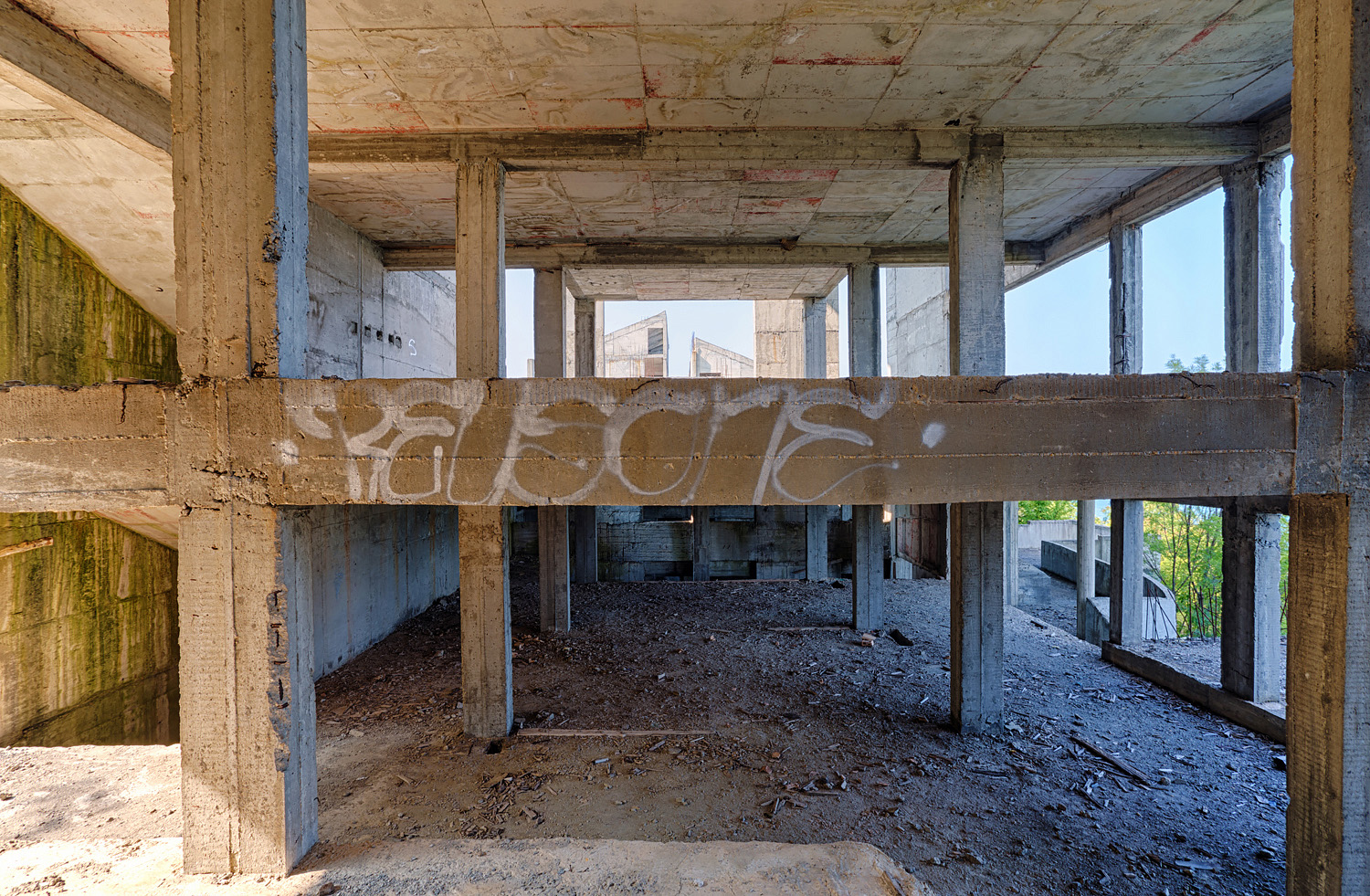
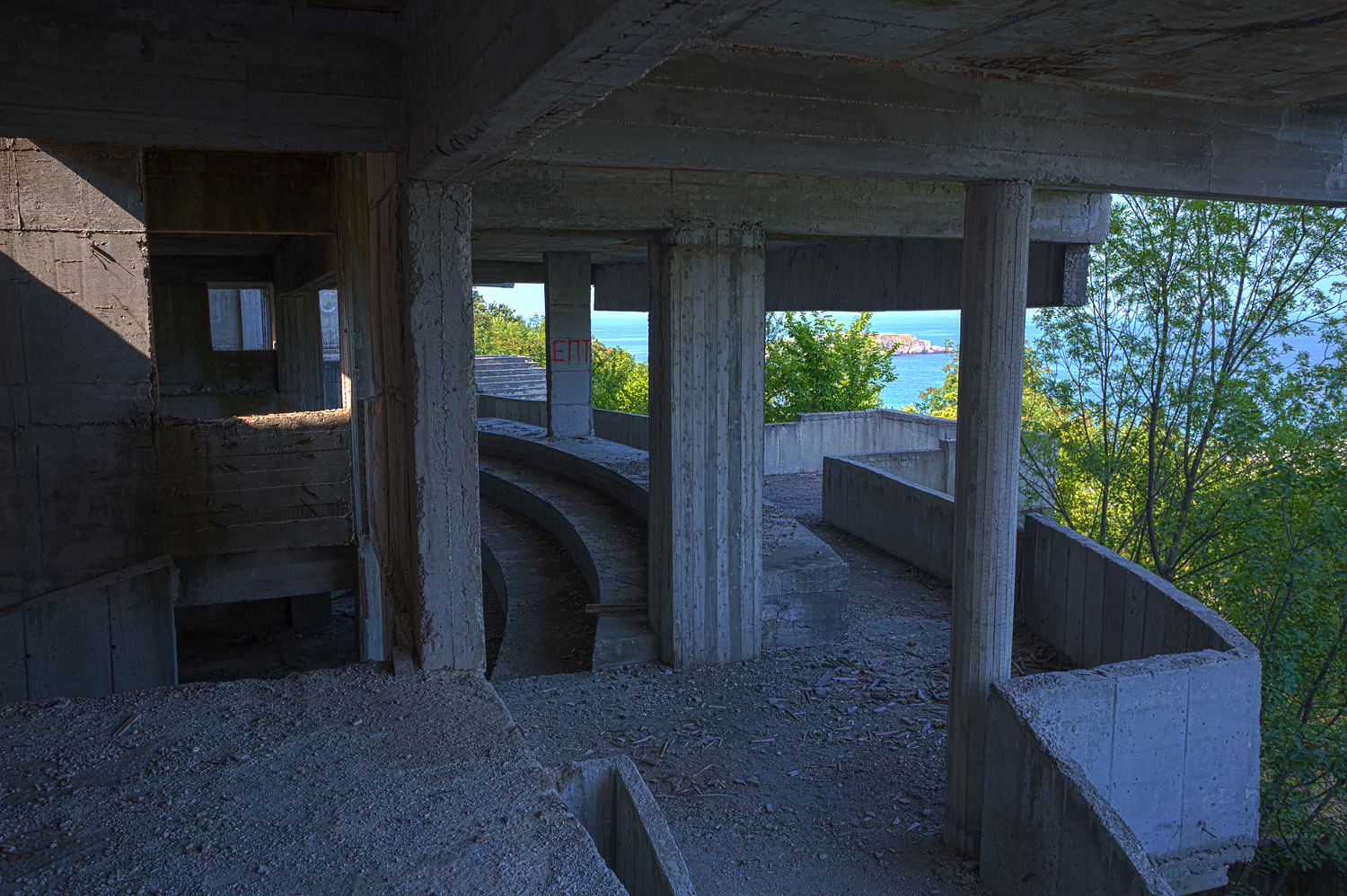 The dead, rusted metal of the unfinished construction site contrasts starkly with the living nature in the background
The dead, rusted metal of the unfinished construction site contrasts starkly with the living nature in the background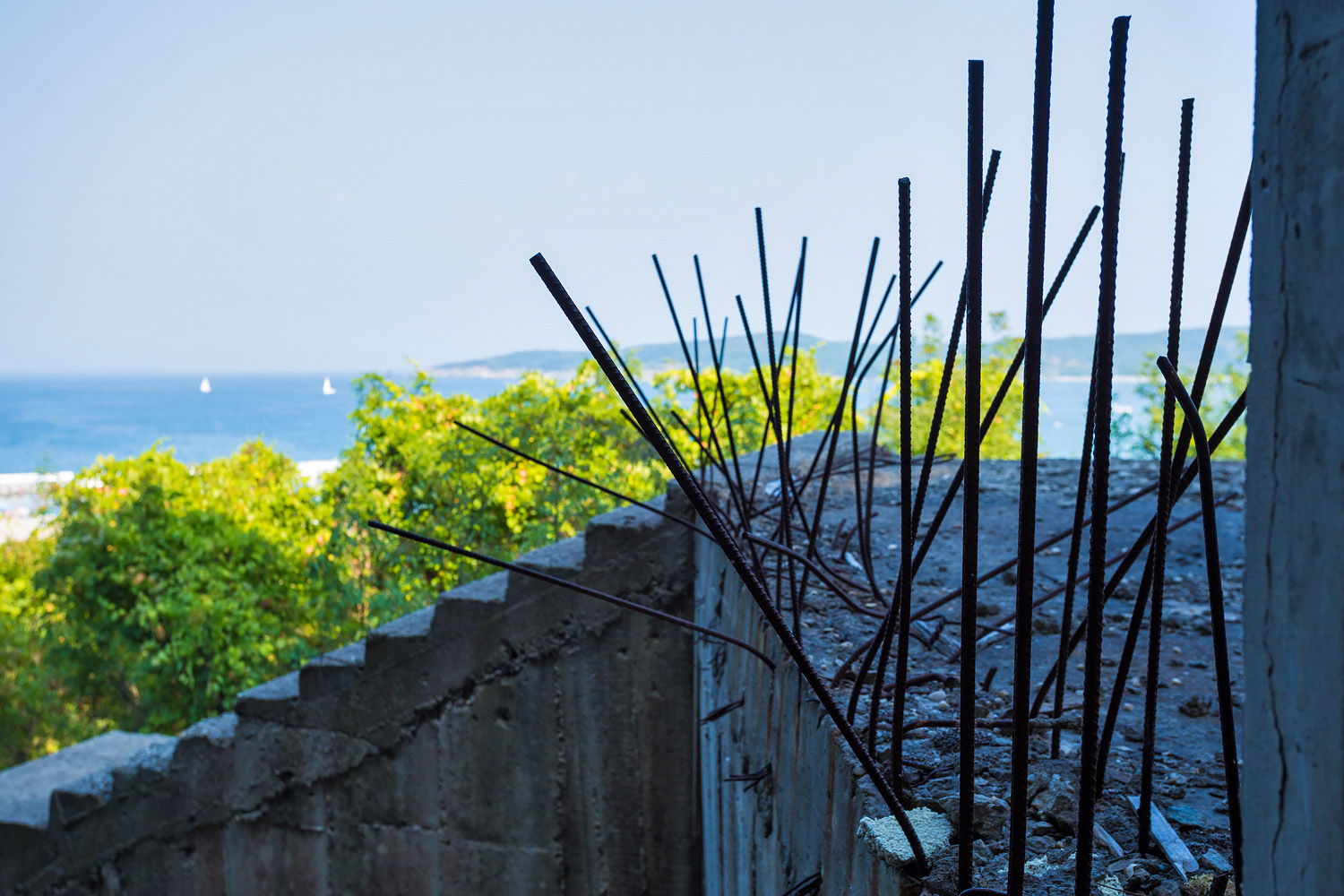 I am guessing this was "the stage"...
I am guessing this was "the stage"...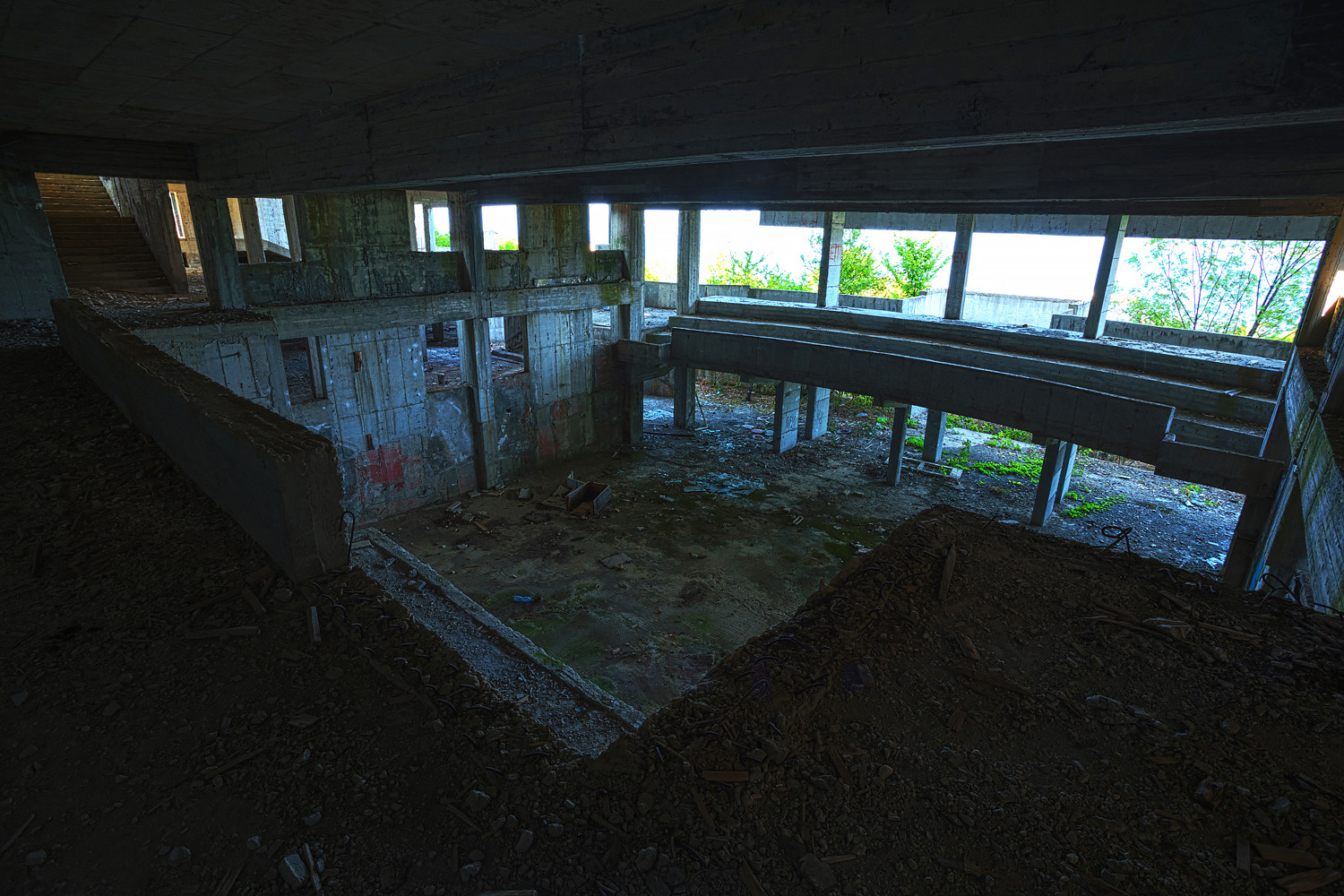 A look left from the upper level of the stage compound
A look left from the upper level of the stage compound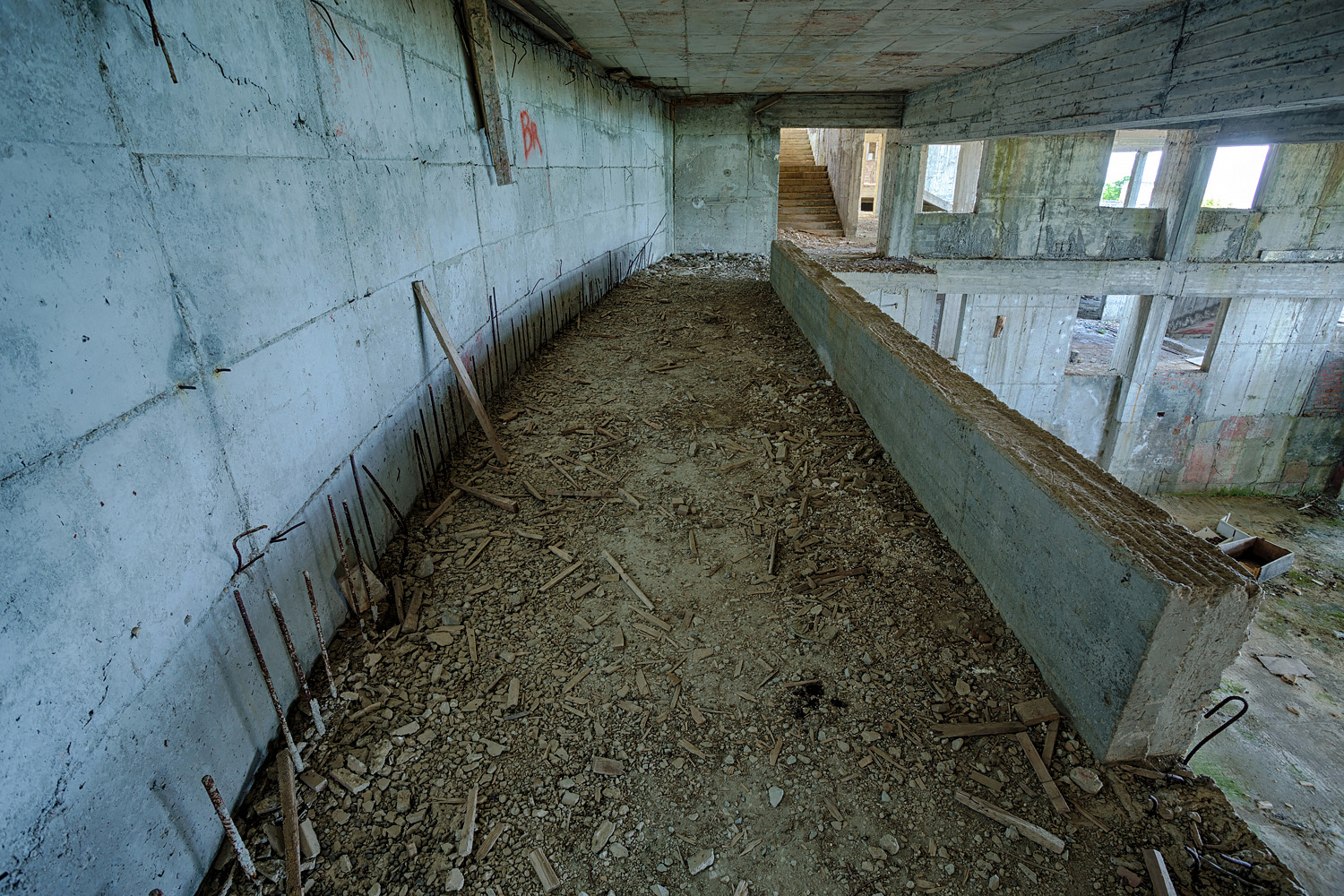 And a look down, where only chaos and destruction now reign
And a look down, where only chaos and destruction now reign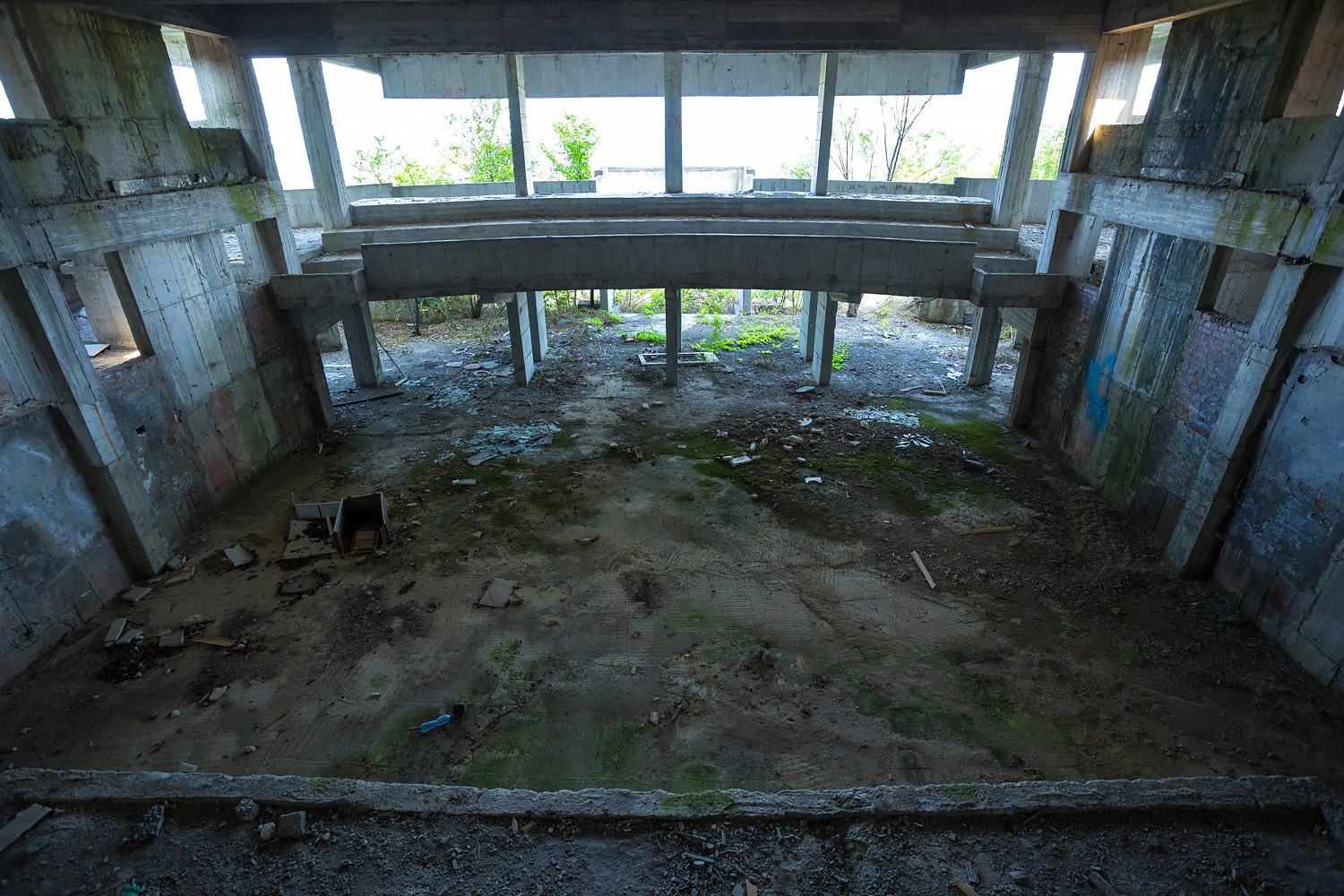 A look at some of the other buildings, through the eyes of one of their mutilated and abandoned brethren
A look at some of the other buildings, through the eyes of one of their mutilated and abandoned brethren  A view from the roof. Perhaps this was supposed to be the topmost floor, but it was never to be
A view from the roof. Perhaps this was supposed to be the topmost floor, but it was never to be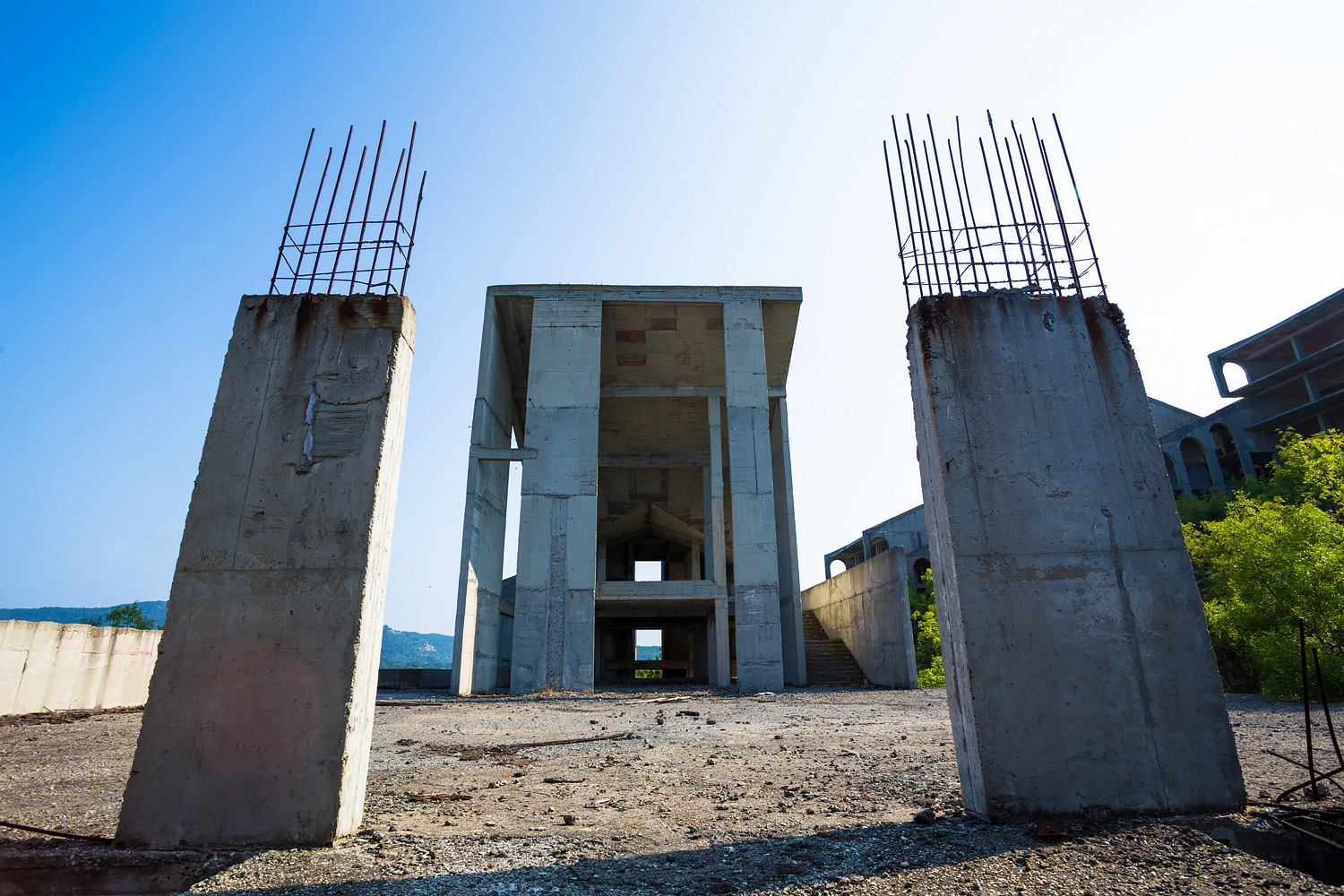 Patriotic graffiti
Patriotic graffiti 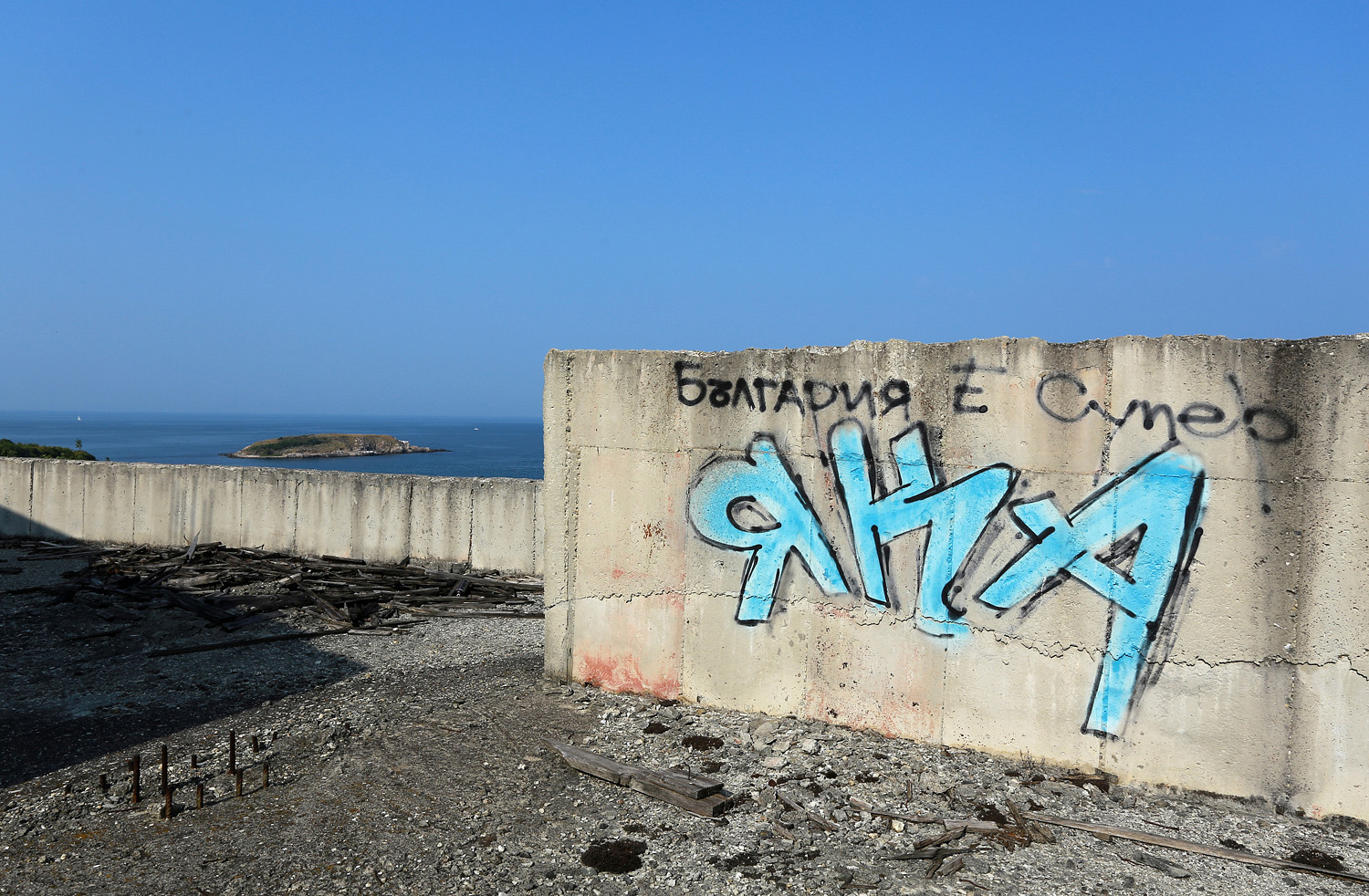 And a viewpoint encompassing most of the complex
And a viewpoint encompassing most of the complex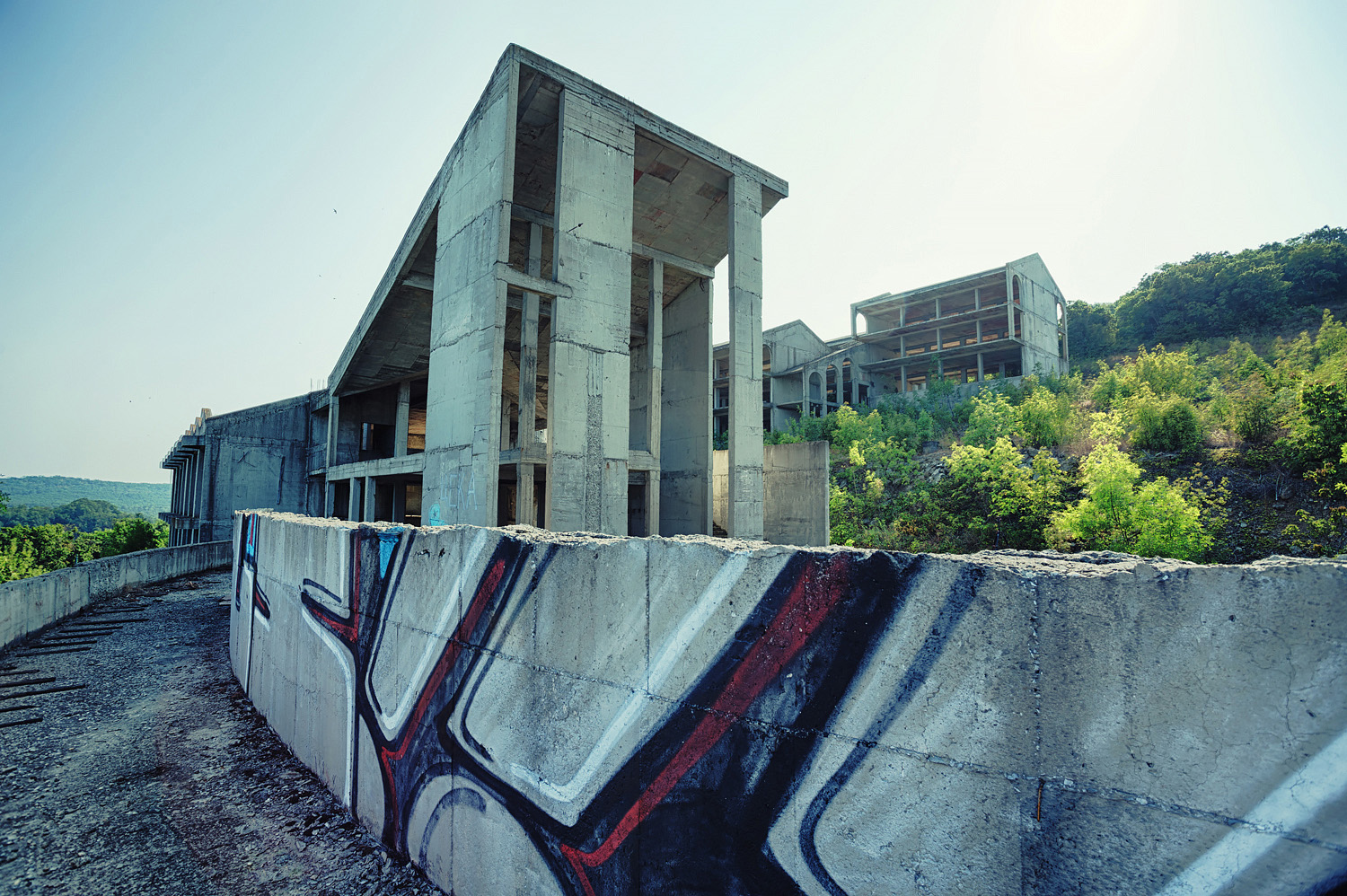 One of the top story windows frames the scenery of Arkutino beach below
One of the top story windows frames the scenery of Arkutino beach below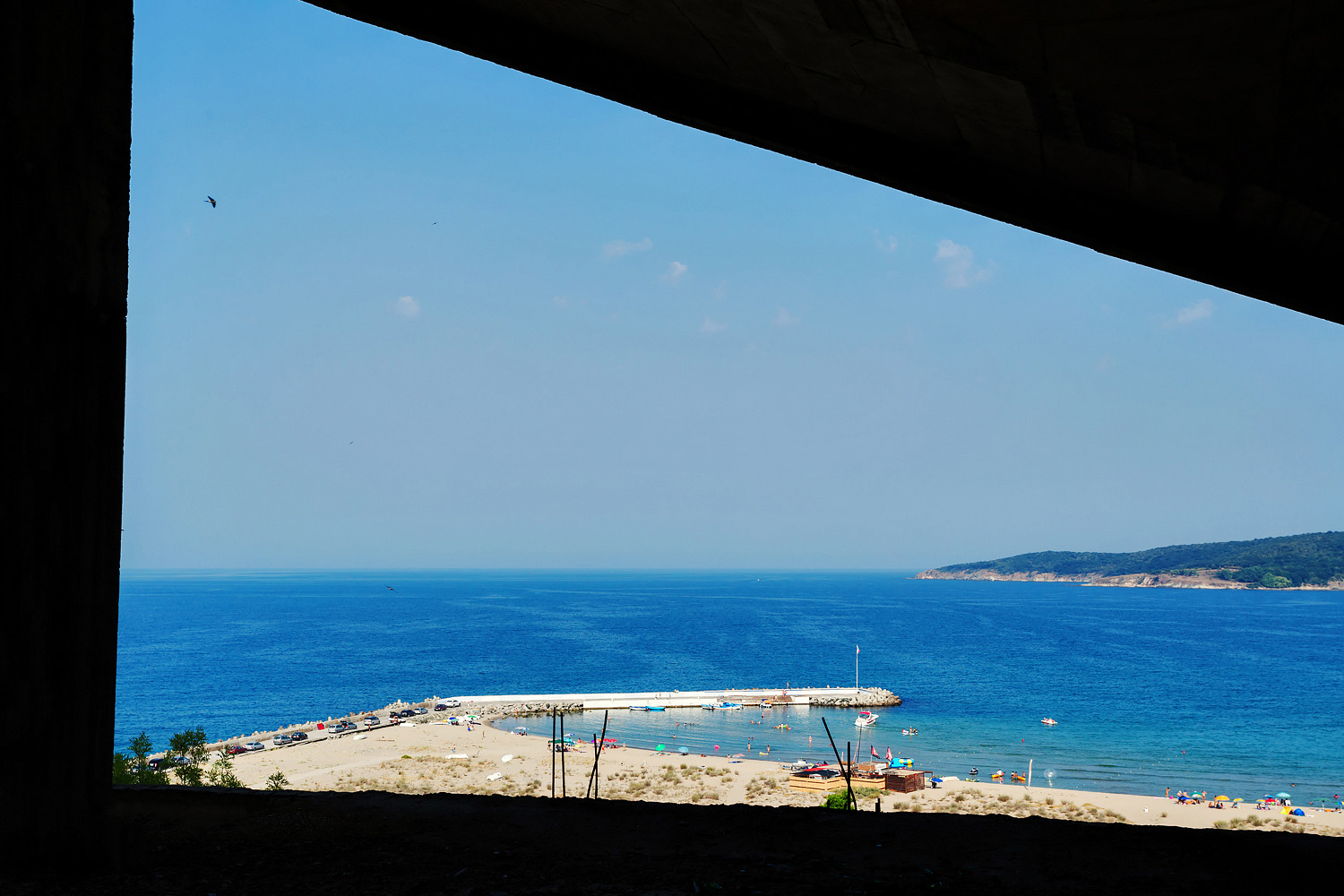 Another date of doom
Another date of doom The spiral staircase as seen from the top down. I had to be quite careful not to slip through one of the many openings right next to the steps, as I climbed up. My guess is that the gaps were supposed to contain windows, but the project never made it to that stage of completion.
The spiral staircase as seen from the top down. I had to be quite careful not to slip through one of the many openings right next to the steps, as I climbed up. My guess is that the gaps were supposed to contain windows, but the project never made it to that stage of completion. 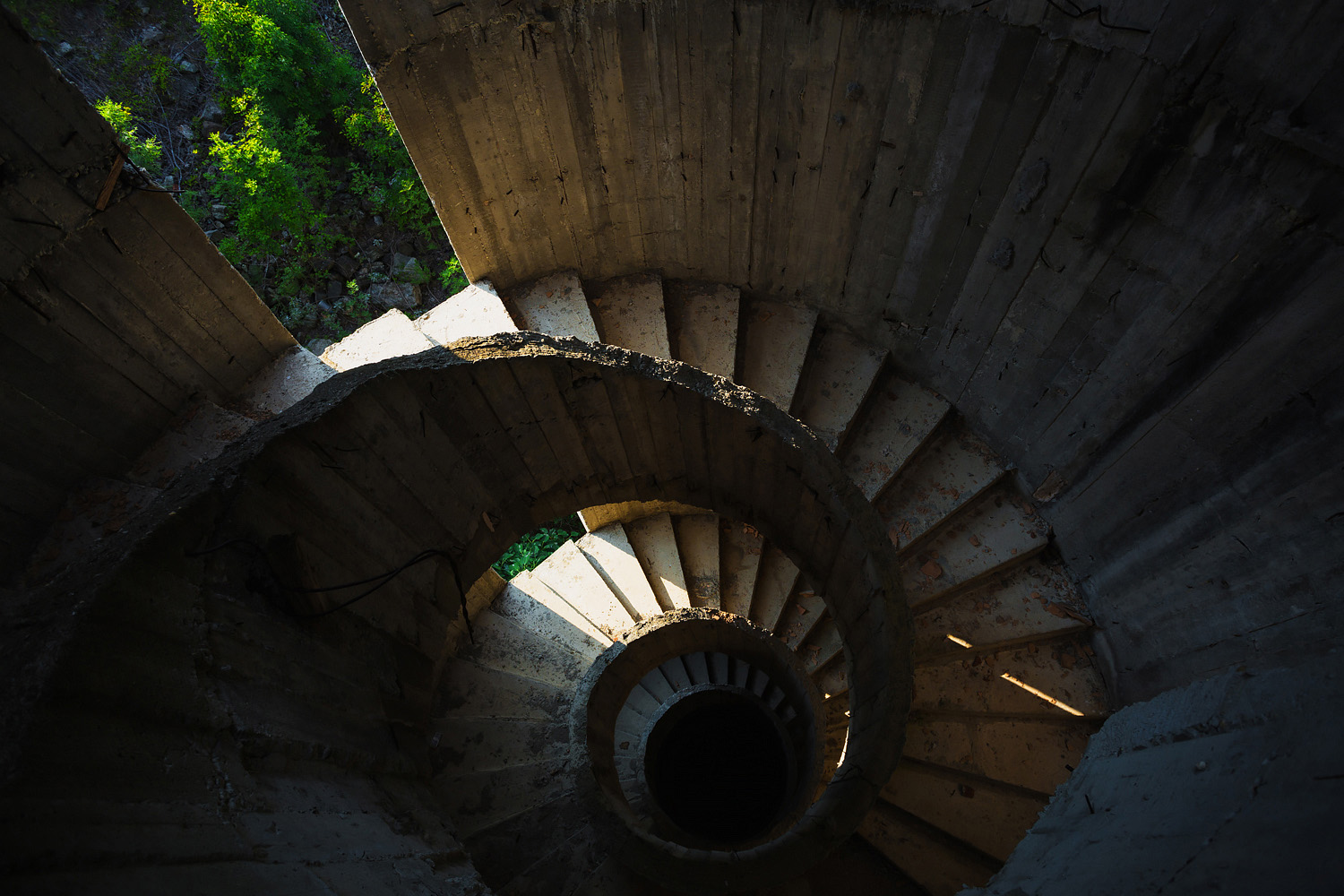 A variety of structural breaches abounded...
A variety of structural breaches abounded...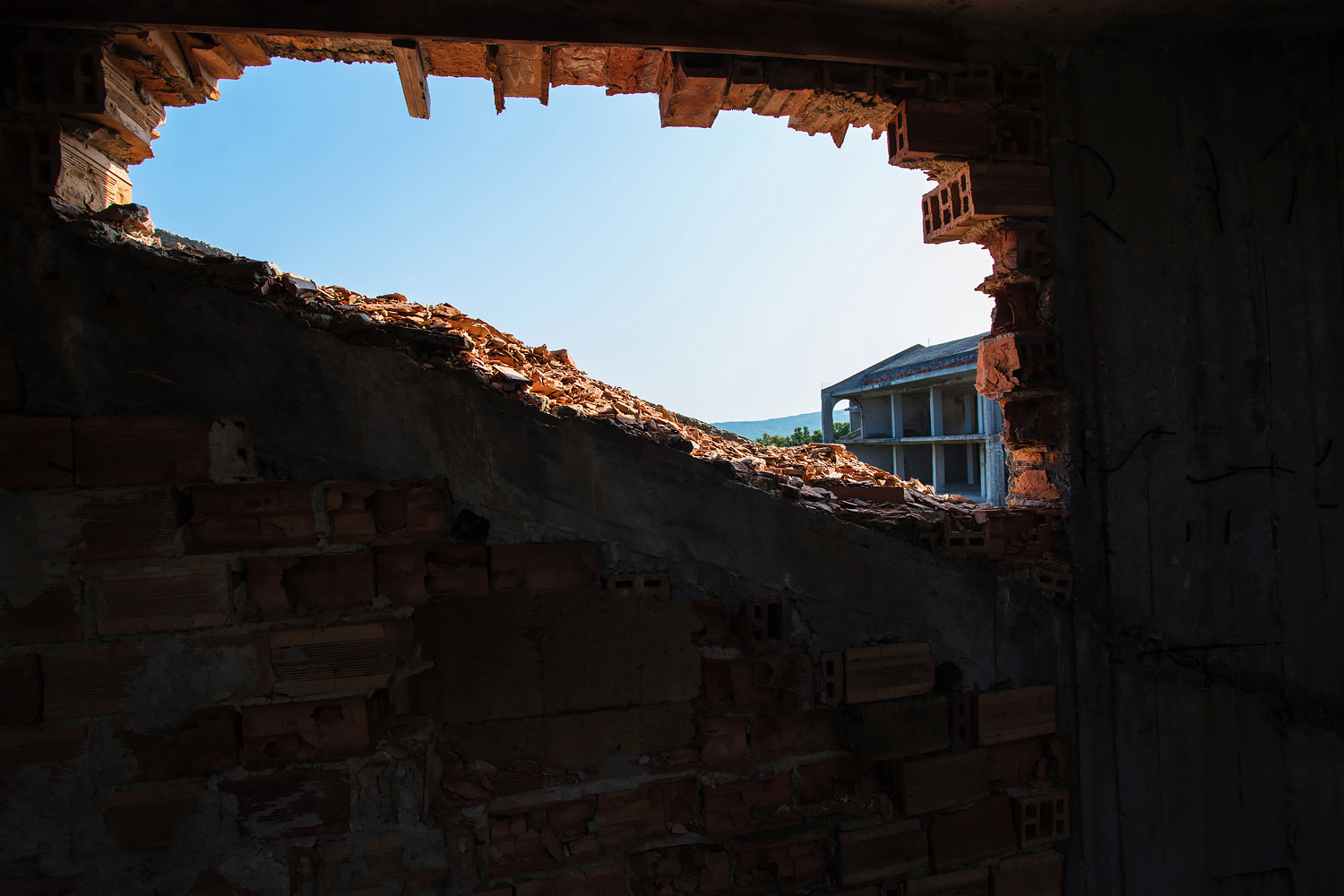
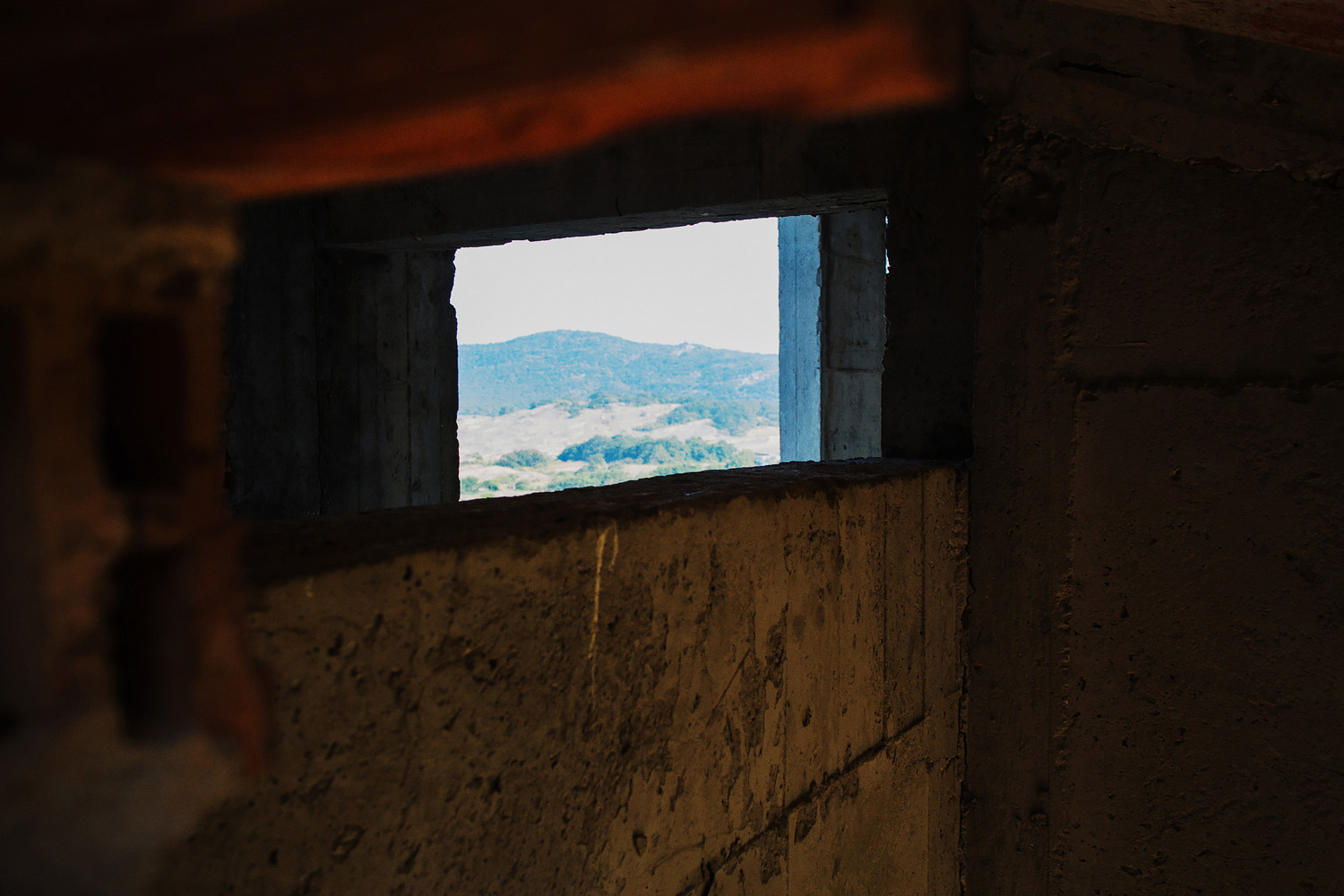 A part of the roof, exhibiting the unusual architectural design of the buildings
A part of the roof, exhibiting the unusual architectural design of the buildings 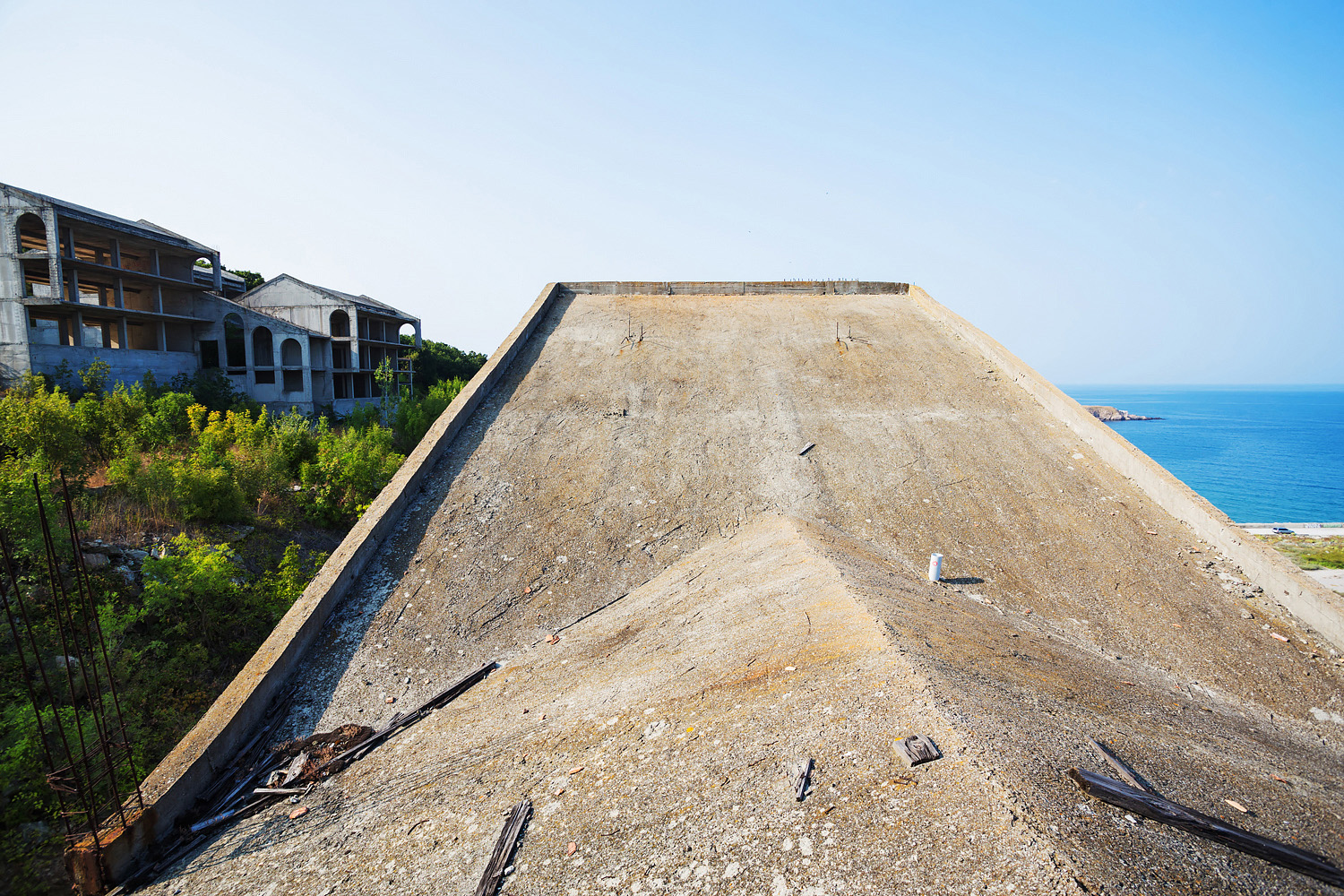 And a look to the other side, toward the beach strip and sand dunes
And a look to the other side, toward the beach strip and sand dunes 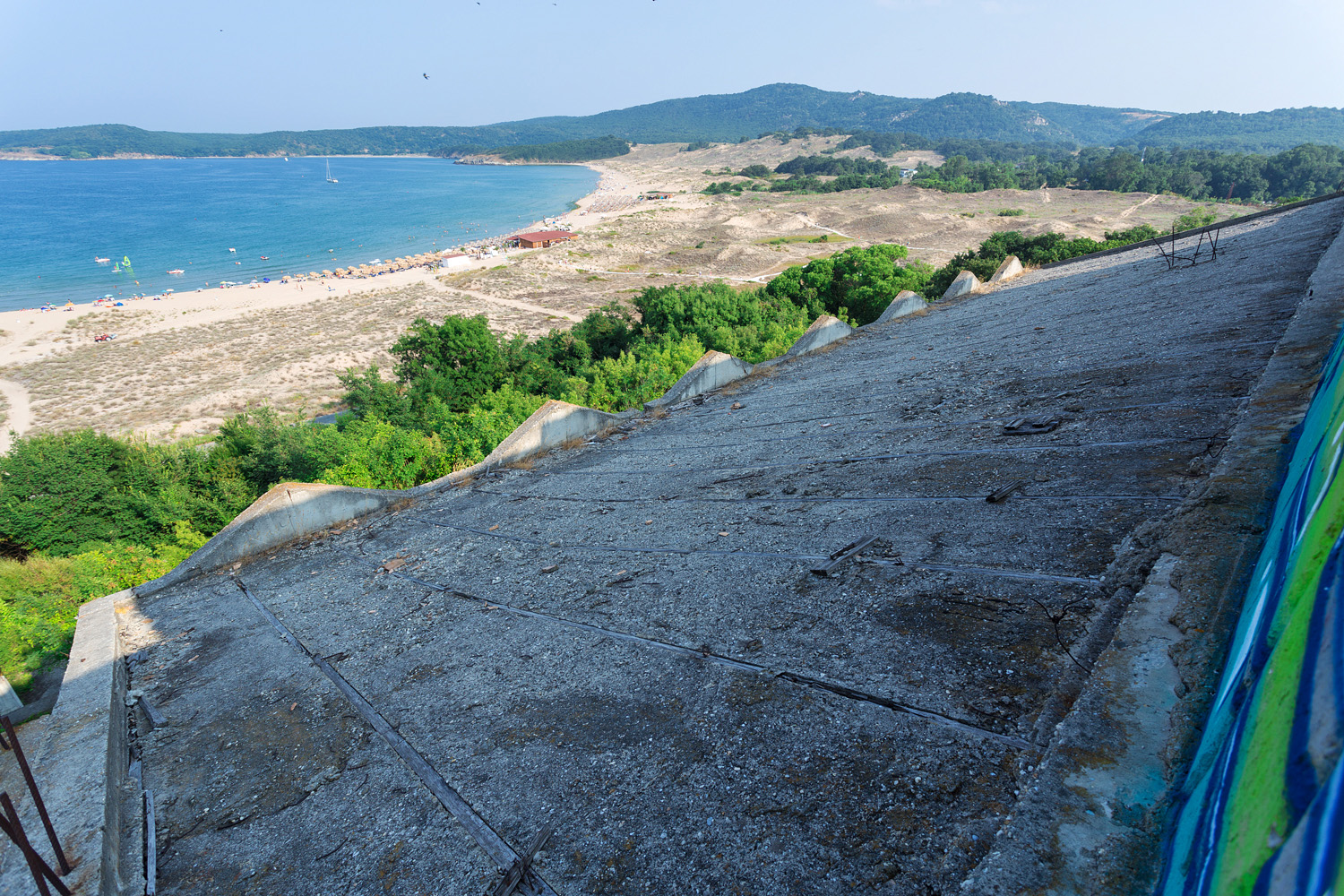 The stage, from the audience's point of view. This is the same stage from the previous images - for those, I was on the upper level's left side, shooting down.
The stage, from the audience's point of view. This is the same stage from the previous images - for those, I was on the upper level's left side, shooting down. 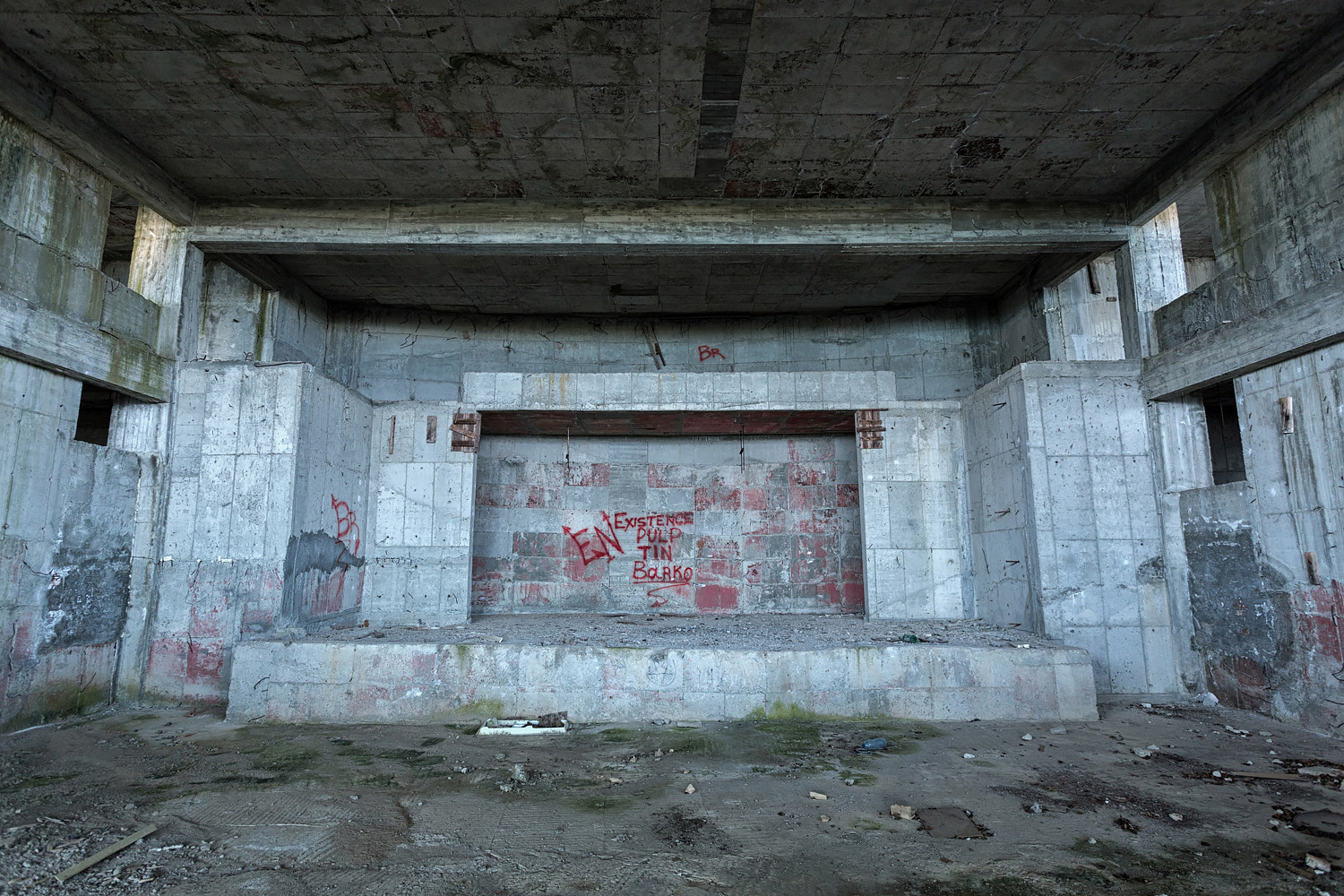
Outside again, where I encountered remains of a railway, overgrown with shrubs. Quite likely, this rail line was used for transporting construction material to the massive site. 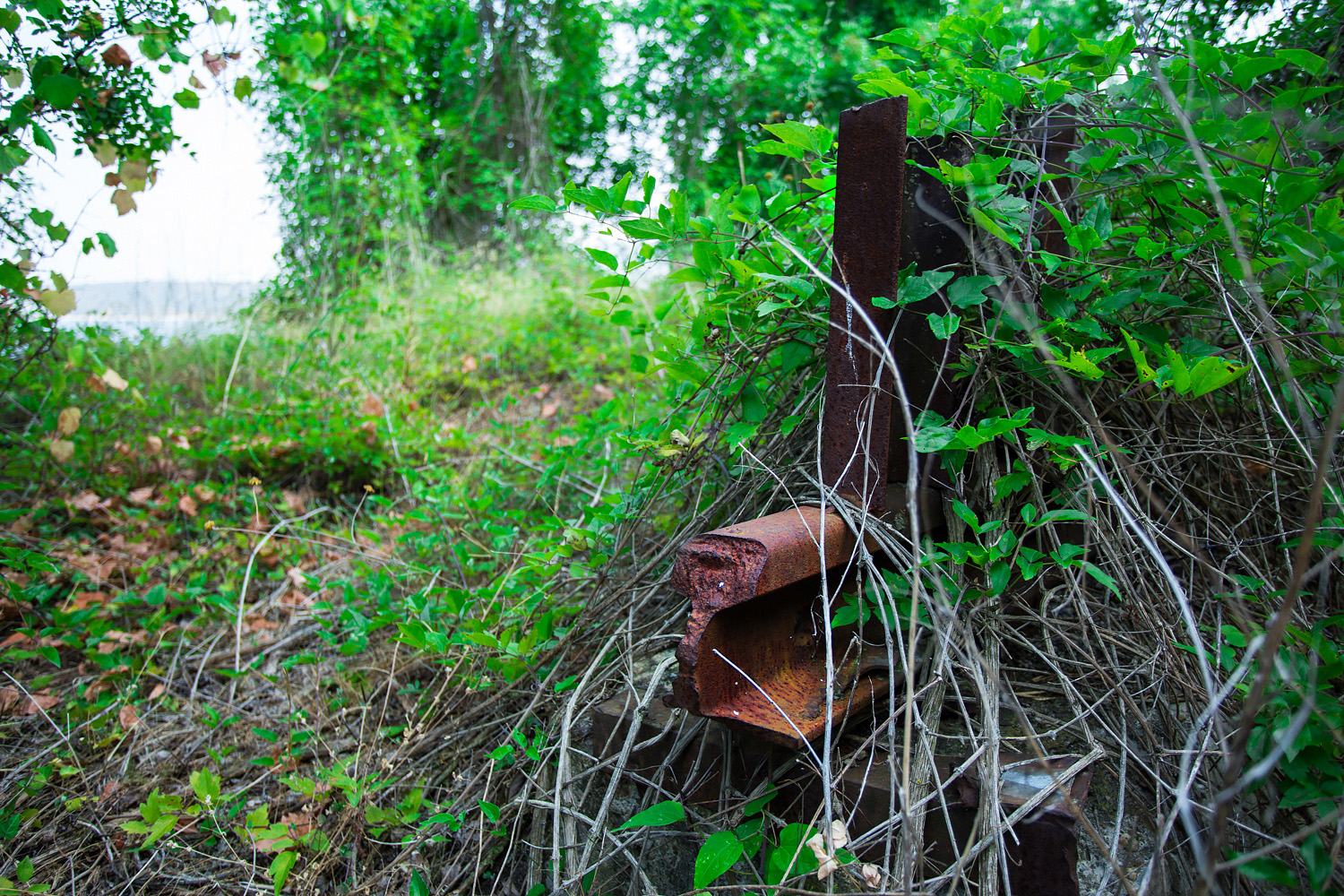 Farewell, Arkutino!
Farewell, Arkutino!